Virtual Field Trip
from virtual-geology.info

Locality 4.2 - the Upper Carboniferous
of the Marros Sands - Amroth section
It is important that you access
this field trip on a laptop or desktop PC. Click on any image to enlarge
it.
In this excursion, we will be traversing
the coast westwards from SW Carmarthenshire into SE Pembrokeshire. Our traverse
starts at the west end of Marros Sands, and finishes at Telpyn Beach, east of
the village of Amroth. Explore the area in Google
Maps.
The aim at this location is to walk
through an Upper Carboniferous sedimentary sequence, using a part-completed
log, and to add detailed outcrop information to that log. As always, you should
collect and synthesize information of a range of different types - lithology,
thickness and geometry of sedimentary units, sedimentary structures and palaeocurrents,
fossils and trace fossils (or absence thereof), lateral and vertical changes
etc. From these observations, you should be able to attempt interpretations
of the processes and environments involved in the formation of the section.
Handout: refer to the handout
for today, which contains essential diagrams and information. Don't forget to
use the information in the Field Guide too.
Tasks: See today's handout,
and the photo captions and information below.
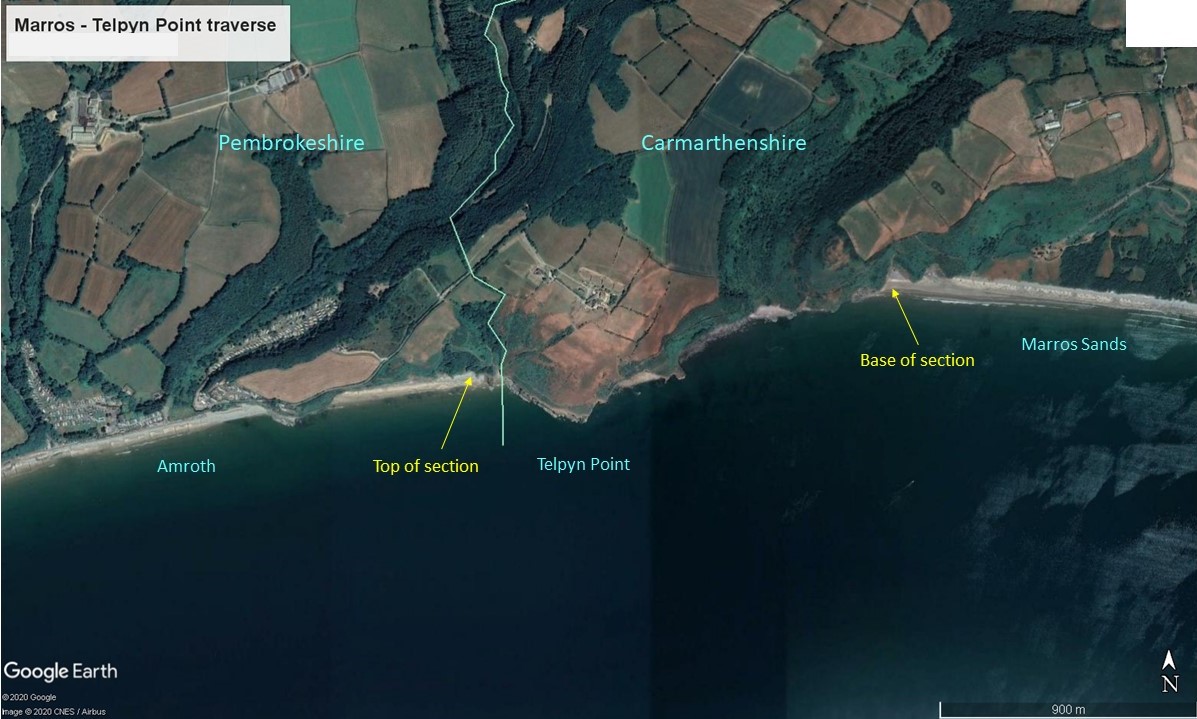
Google Earth map showing
the location of the section
There is superb exposure in the cliffs
and in the wave-cut foreshore. This section is very tide dependent, but we won't
need to worry about that this year! There is complex Variscan compressional
deformation, including thrusting, in the Palaeozoic rocks along this coast,
but we have chosen a section with few structural complications, where the rocks
are dipping gently to the west. So, as we traverse west along the foot of the
cliffs, we move slowly up-section through rocks of Namurian (Upper Carboniferous)
age. This section lies stratigraphically immediately below the section at Locality
4.1, Amroth East.
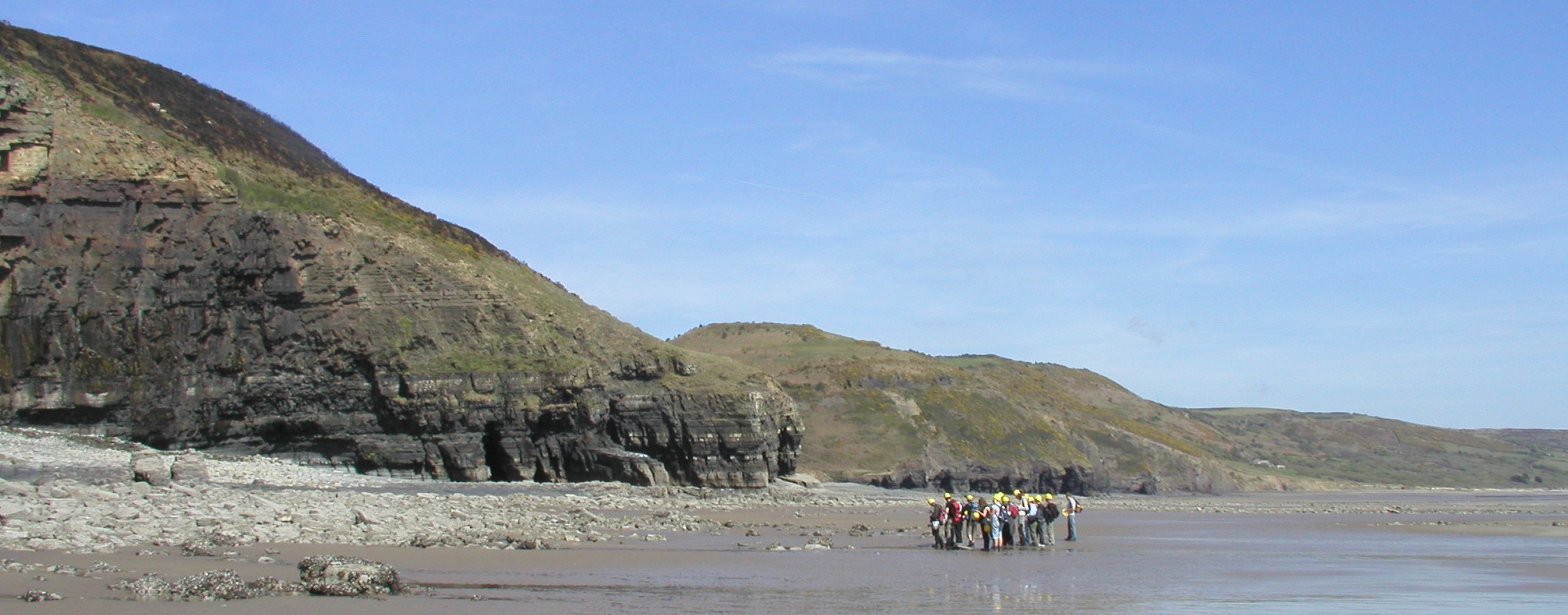
General view of the lower
part of the section. Marros Sands is to the right (east).

You will complete annotated versions
of Log 1 and Log 2 (separate sheets provided in your base maps file) as part
of your task. This is best accomplished by printing these sheets out, and writing
on them. An alternative is to work on the logs in PowerPoint slides, using text
boxes and drawing tools to annotate them. Log 2 is an enlargement of the top
part of Log 1, though the Telpyn Point Sandstone.
|
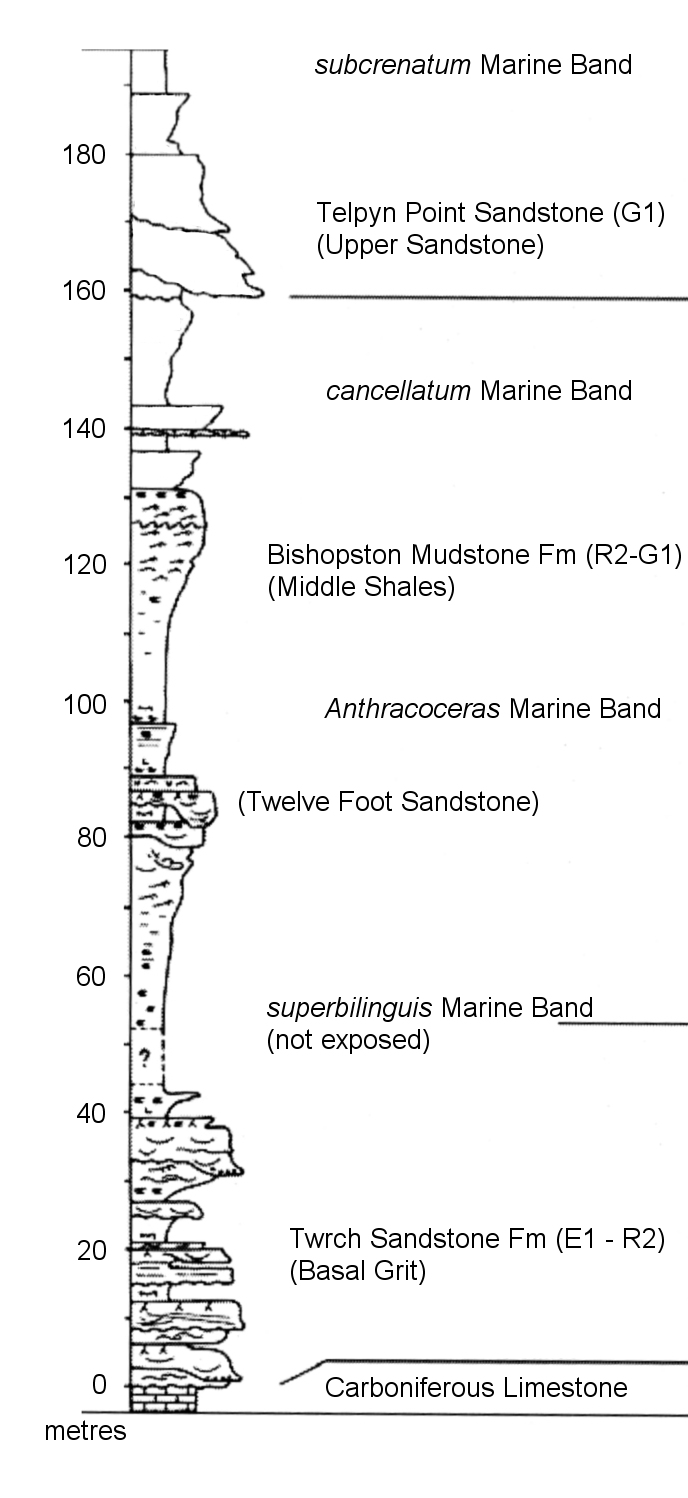
Log 1. Our
coastal traverse starts at 98 m on the log, so ignore the part of the
section below 98m.
|
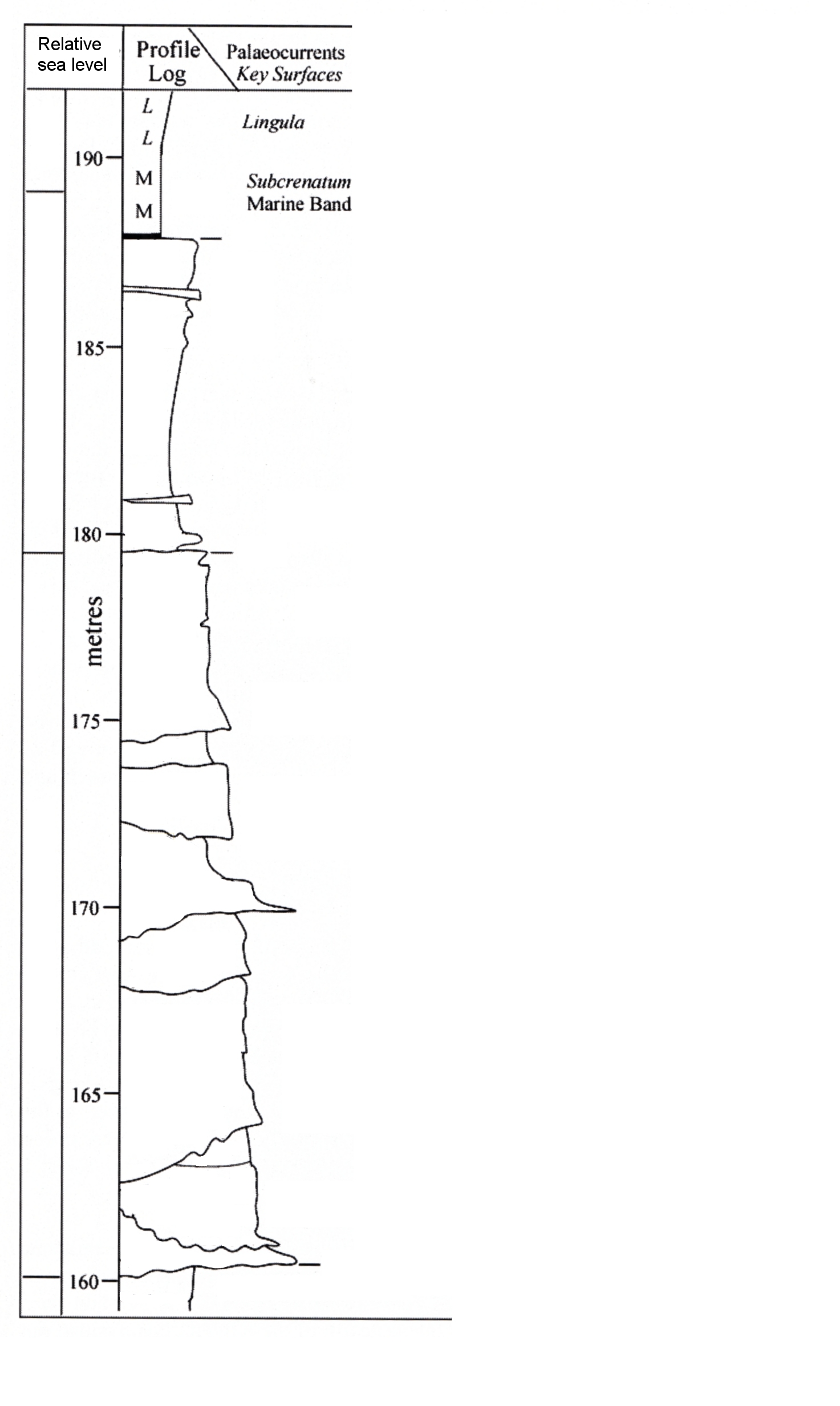
Log 2. This
is an enlargement of the upper part of Log 1 - the Telpyn Point Sandstone
|

Field evidence
The information and photographs below
are located on the log by height. Use them as evidence on which to base your
interpretations. Remember to click on the images to enlarge, so that
you can see maximum detail.
| Height
in section (metres) |
Description |
Photographs
and questions |
| |
Base of
section not seen - obscured by superficial deposits |
|
|
|
| 98 -100 |
dark micaceous mudstones
contain the fossils Carbonicola and Anthracoceras
|
|
|
|
|
100 - 110
|
Striped silty mudstones.
Common thin ironstone bands & nodules
|
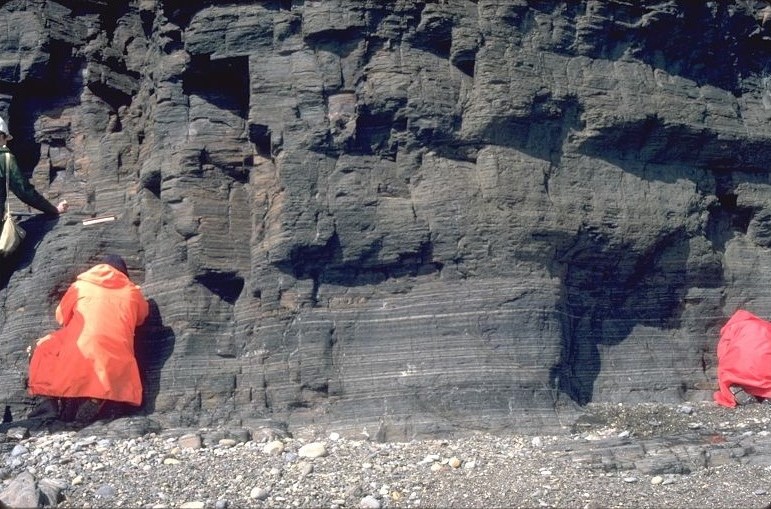
100m on section |
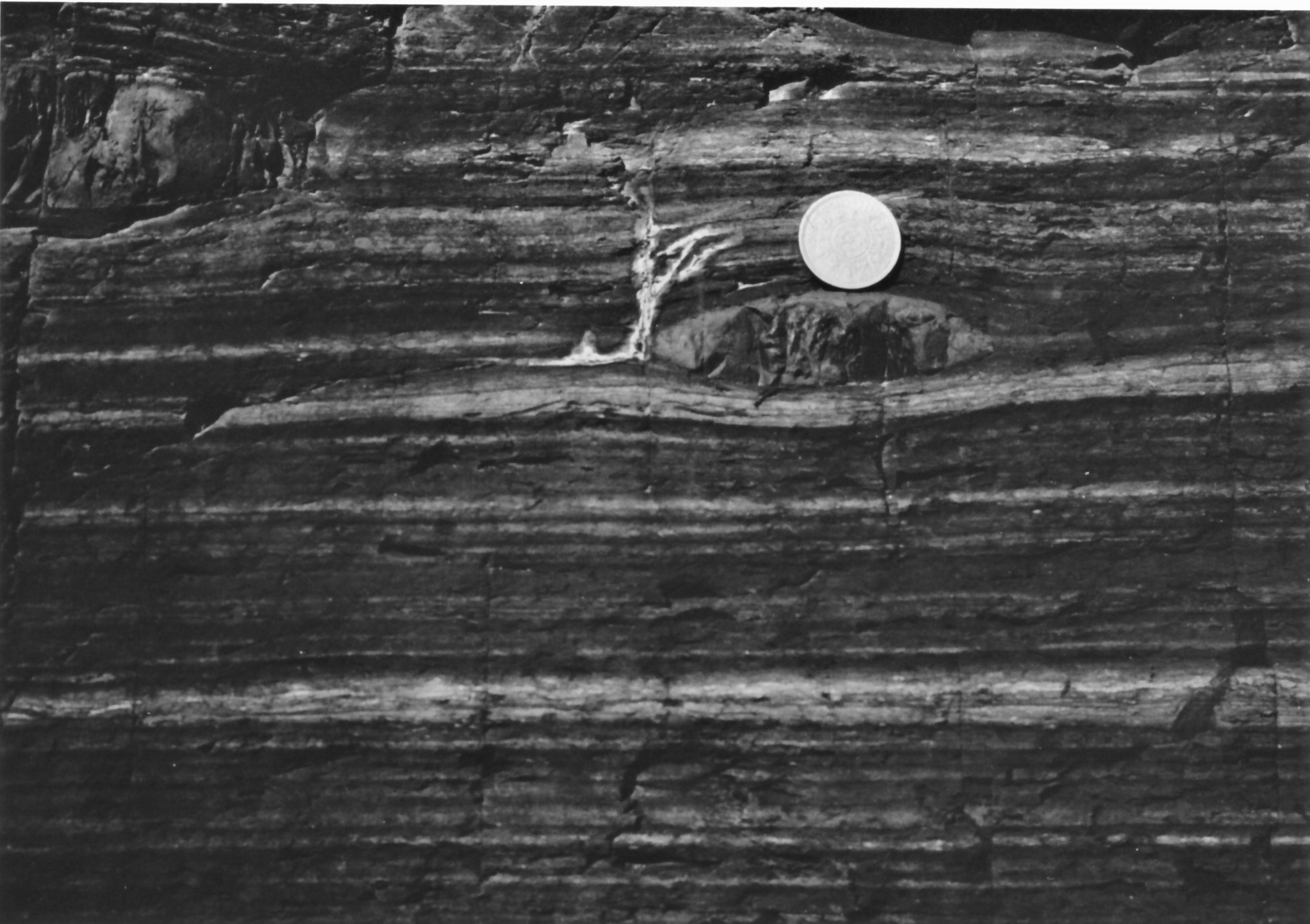
Detail of outcrop to left, showing a siderite 'ironstone' nodule (below
coin) which has been flattened during burial.
|
What does the presence
of siderite tell us about conditions during early diagenesis?
Look carefully at
the laminations. Is there any evidence of bioturbation?
What conclusions
do you draw?
|
|
110 - 119
|
Gradual passage up
from previous unit into medium grey sandy siltstones. Sandstone as discontinuous
streaks and wavy laminations. Trace fossil Planolites on some bedding
surfaces.
|
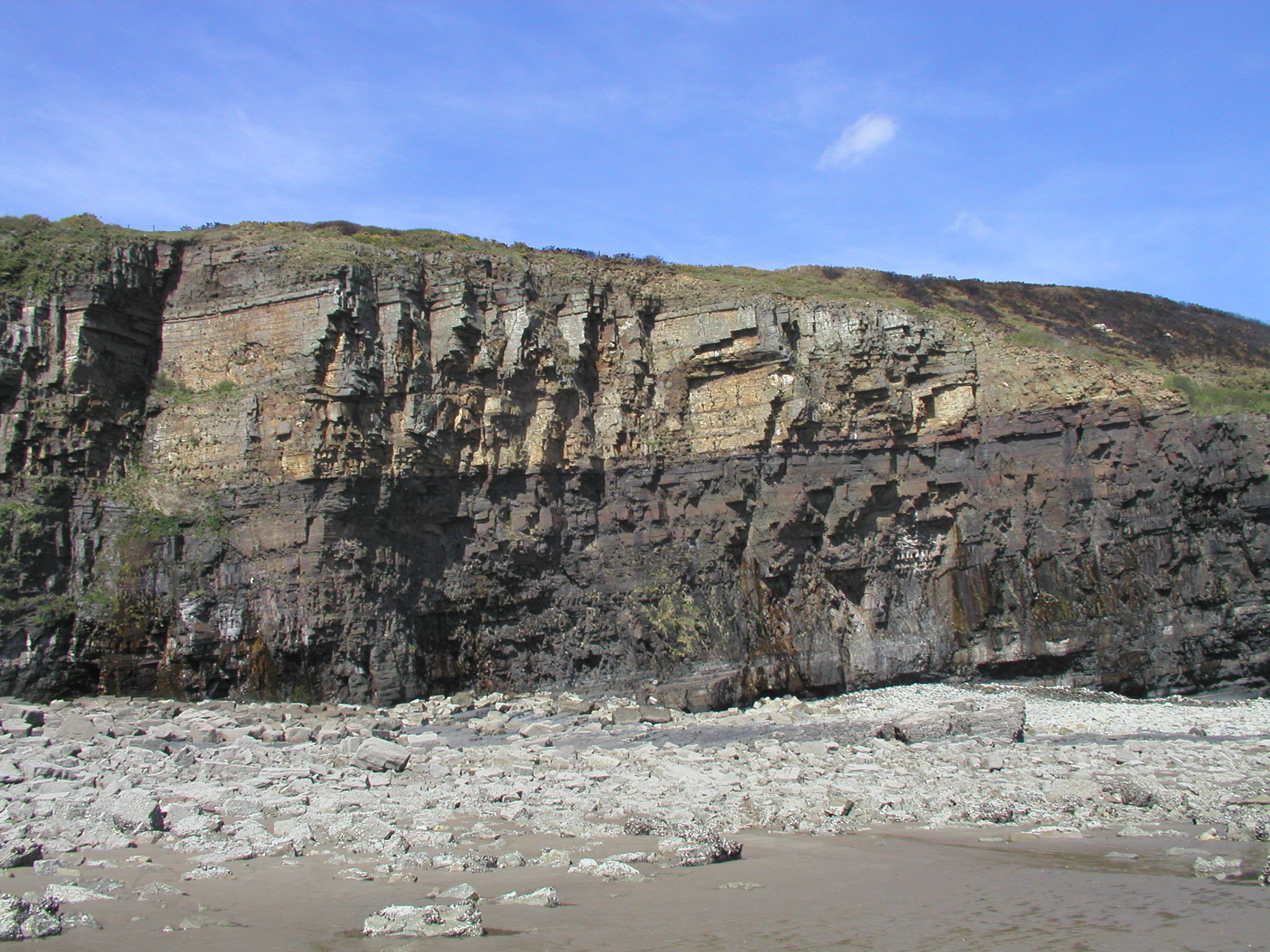
110 to around 140m at the cliff top.
Note changes in colour
- what do they signify about upward changes in lithology?
|
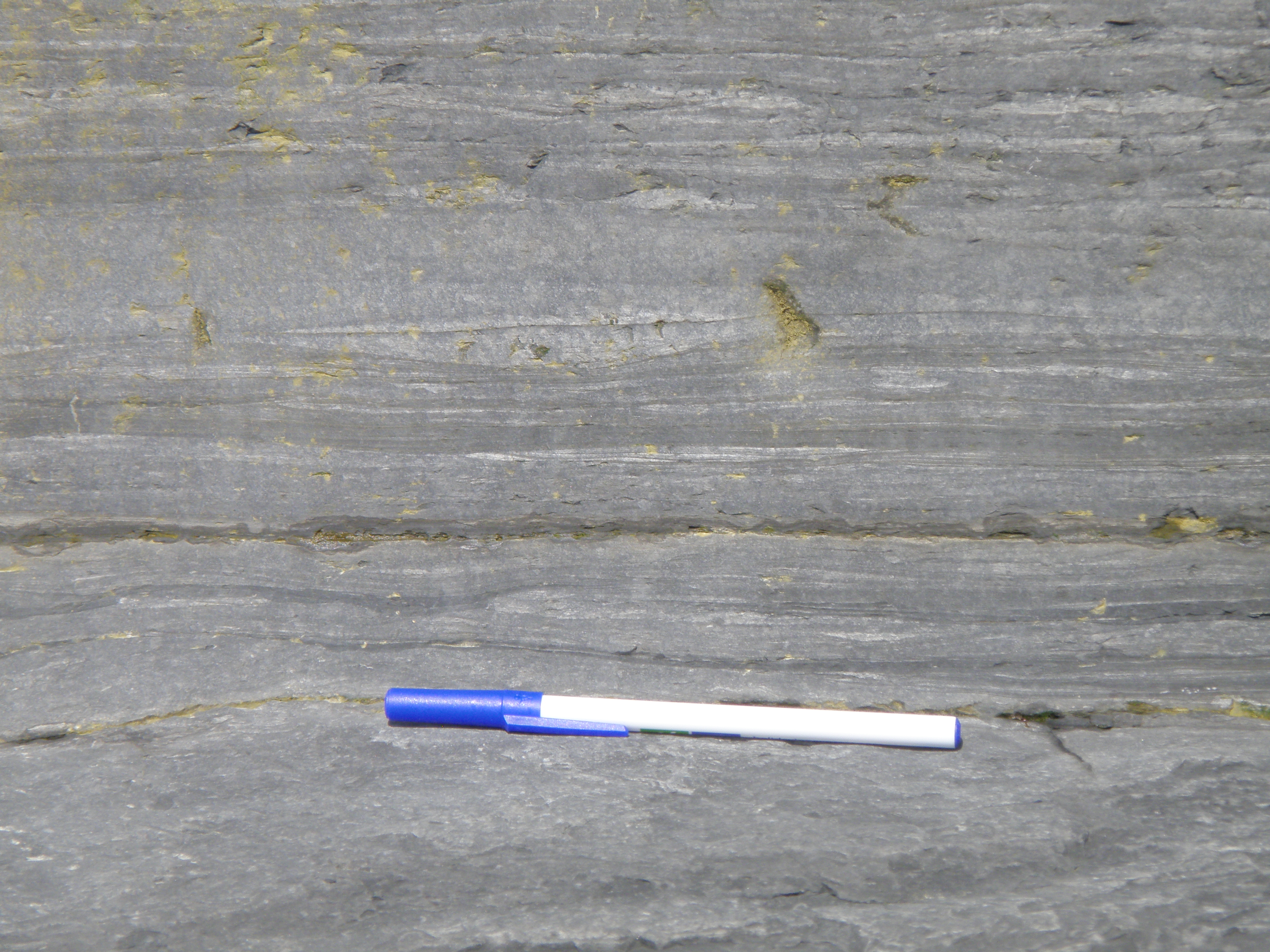
119m |
|
|
119 - 131
|
Gradual passage up
from previous unit into fine micaceous sandstones showing current ripple
cross-lamination, thinly interbedded with wavy siltstones. Rib-and-furrow
palaeocurrents to NW. Plant debris near base. Rare burrows and ironstone
(siderite) nodules throughout.
|
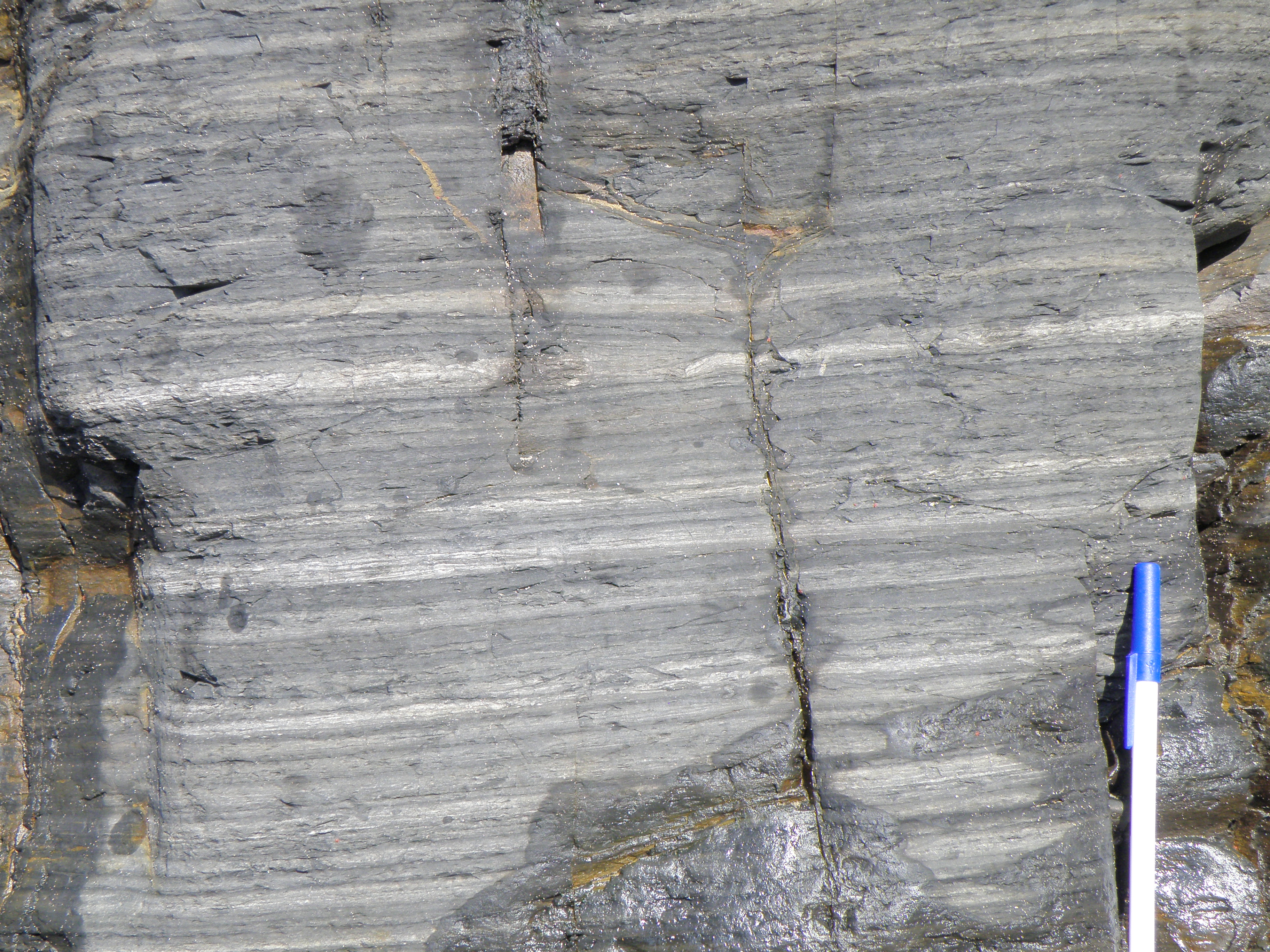
121m |
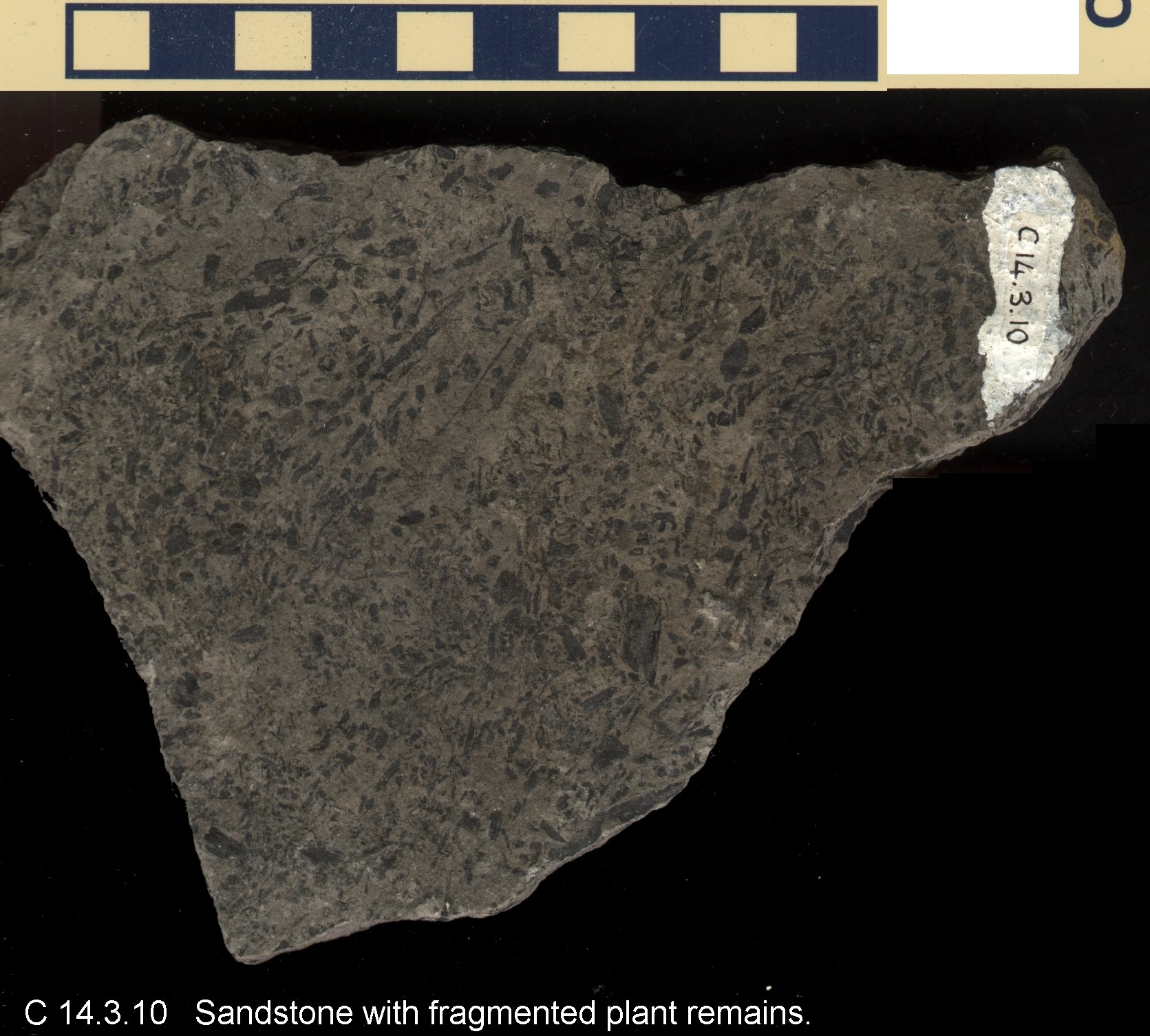
123m
|
|
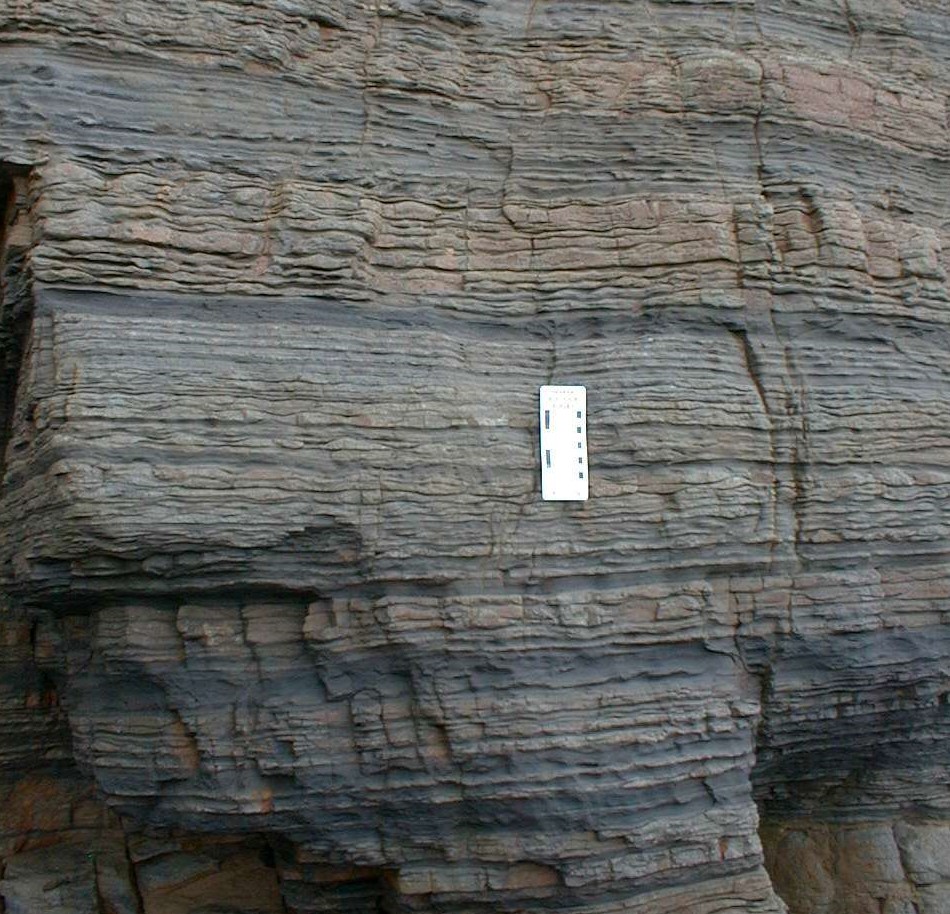
This outcrop occurs at around 124m. Sandstone is light-coloured; mudstone
is dark. The right-hand side of the scale is marked in cm. |
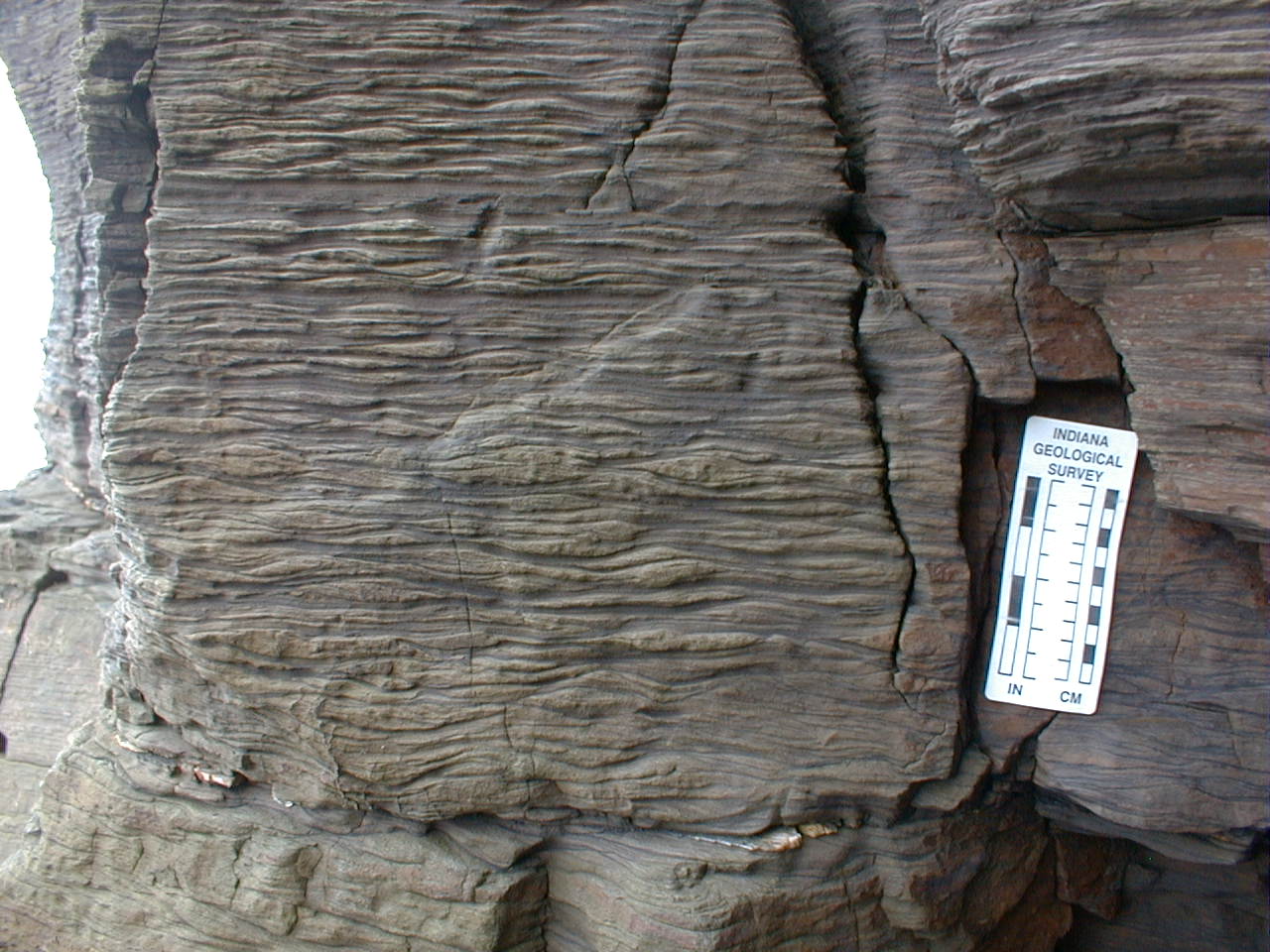
Close-up of photo to left. |
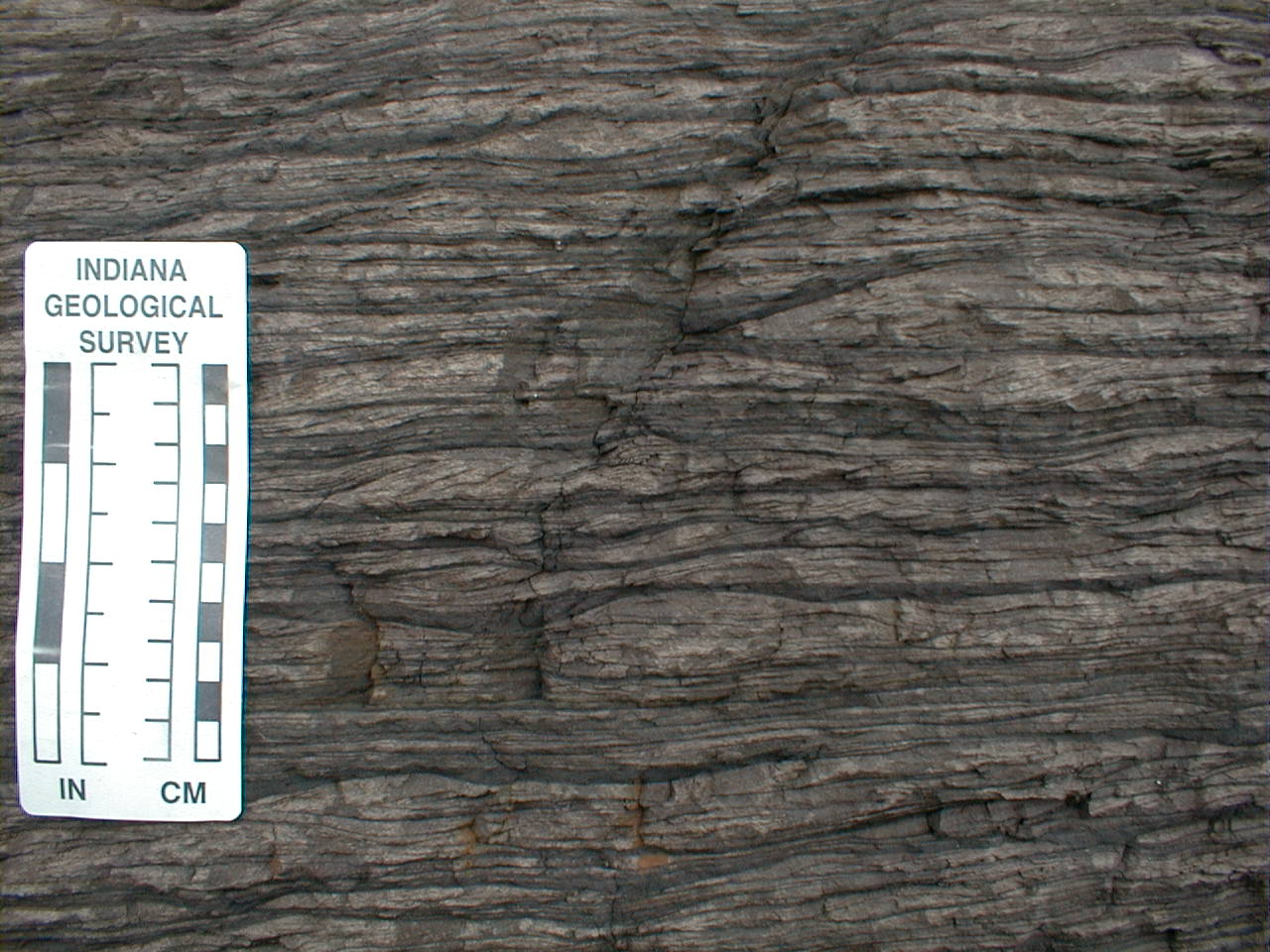
130m
|
| 131 - 137 |
sharp
base; siltstones with sandy streaks & lenticular bedding passing up
into sandy siltstones with symmetrical ripples. Ripple crests are oriented
E-W. Some plant debris, common bioturbation. Trace fossils include Rhizocorallium
& Teichichnus. ?Rootlets at top |
|
|
|
| 137- 139.5 |
sharp,
planar base; dark grey mudstone with solitary rugose corals and fragments
of crinoids and brachiopods |
|
|
|
| 139.5 -
140 |
sharp, erosional
base; coarse sandstone with pebbles of quartz, mudstone & black phosphatized
material - lag deposit
|
|
|
|
|
140 - 142.5
|
Sharp base; silty
sandstone, coarsening up. Current ripple cross-lamination and low-angle
cross bedding. Palaeocurrents to WNW, NNE and E.
|
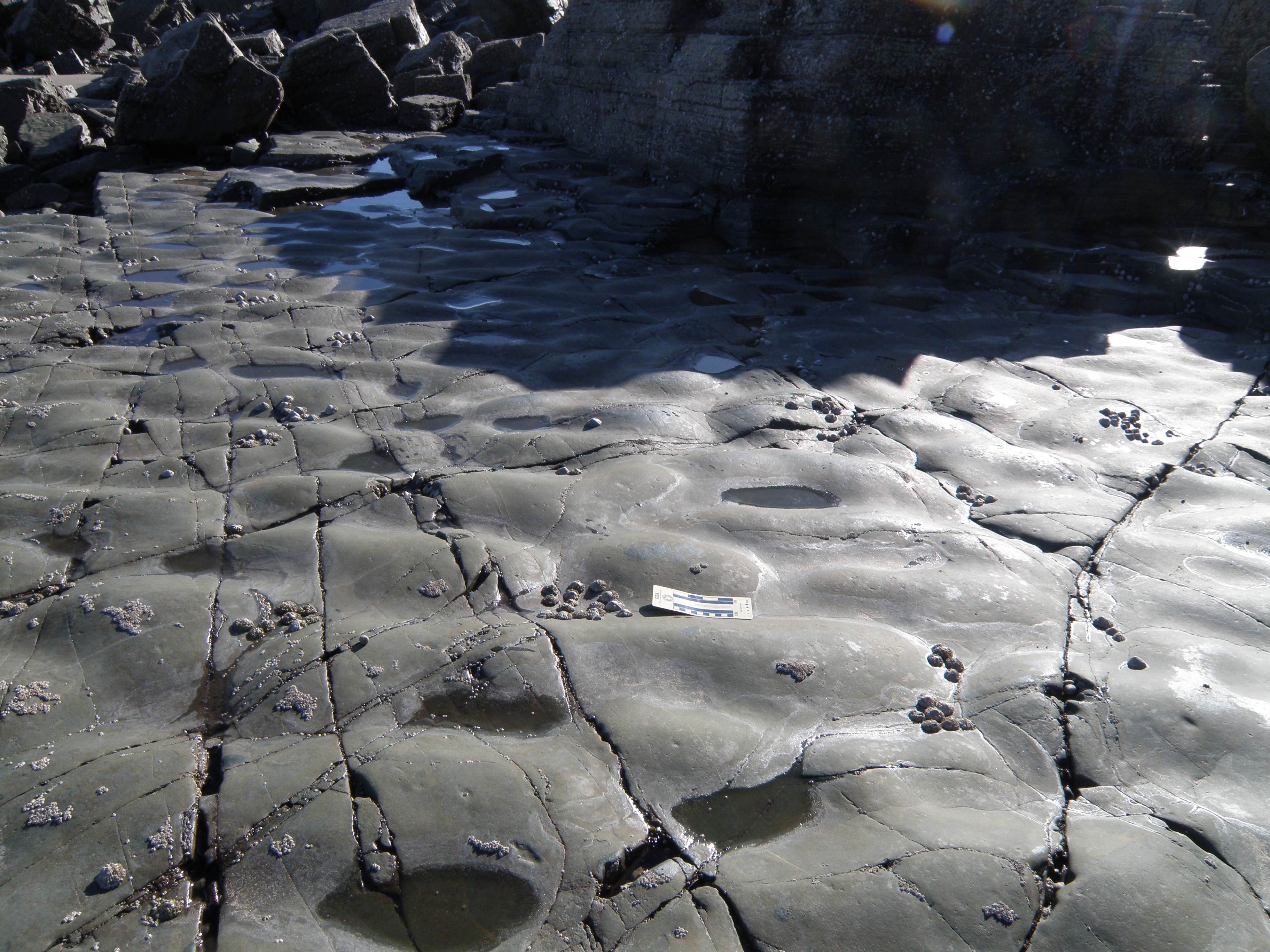
141m |
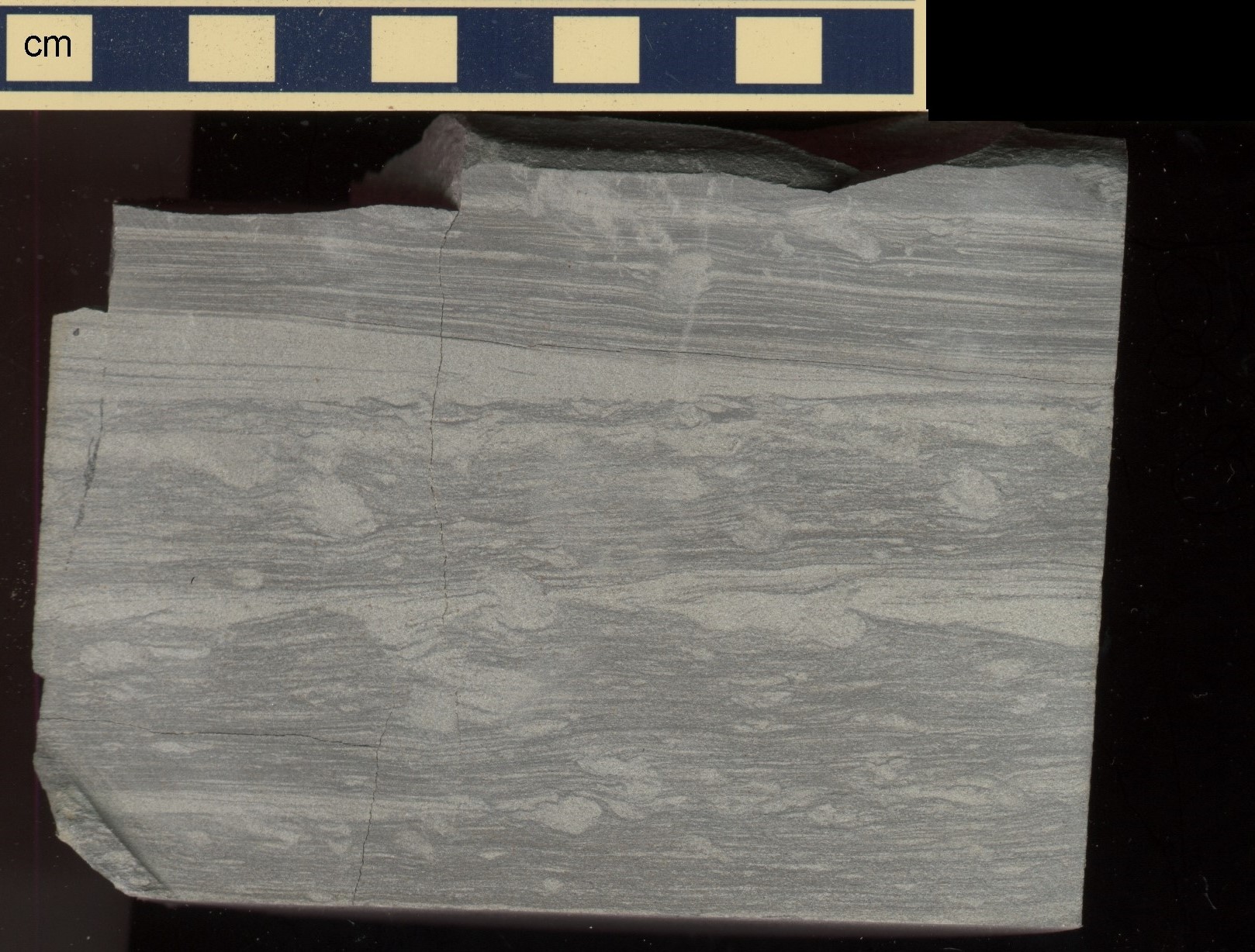
142m |
|
|
142.5 - 145
|
Sharp base; dark
mudstone containing goniatites including Gastrioceras cancellatum
(this is the cancellatum Marine Band)
|
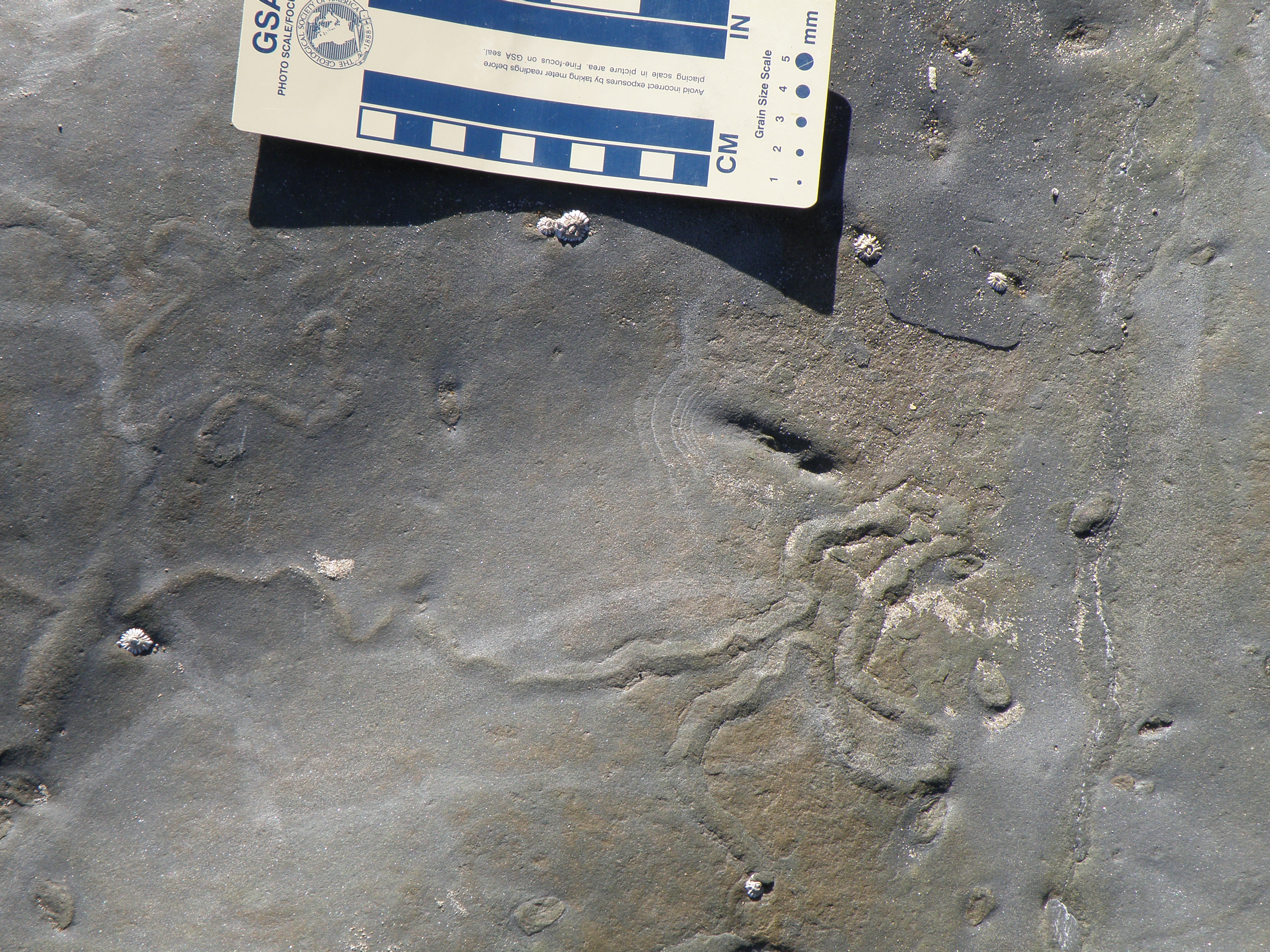
145m |
What is
a marine band? Why are marine bands restricted to thin horizons in the shaly
parts of the section? Why do most of the shales not contain
marine band fossils? |
|
|
145 - 162
|
Gradational base;
parallel-laminated siltstones with lenses and streaks of sand, becoming
more sandy upwards. Symmetrical ripple crests in sandstones above 155m
are oriented from E-W to NE-SW. Trace fossils include Scolicia.
|
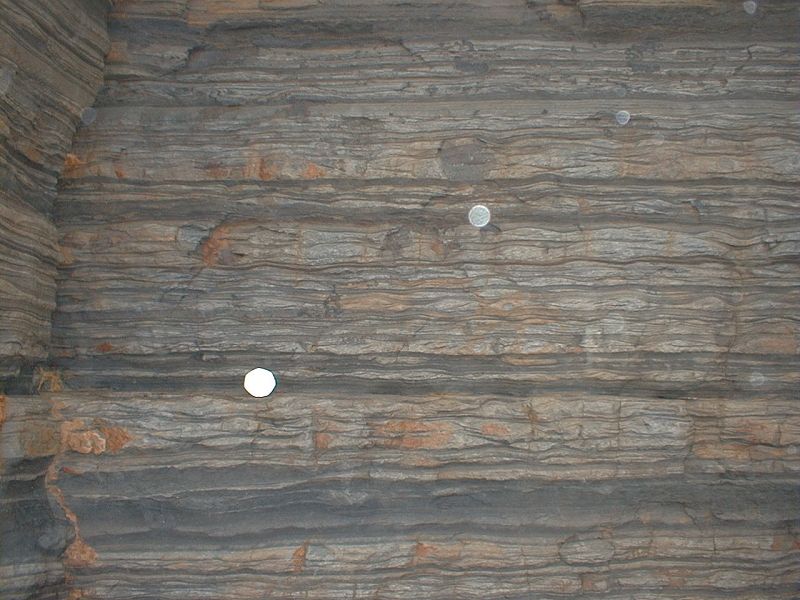
148m
|
|
|
|
162 - 172.5
|
Sharp erosional base
of the Telpyn Point Sandstone (TPS) cuts down at least 2m into the underlying
beds.
These coarse to medium
sandstones show large-scale trough cross-bedding, with palaeocurrents
towards the SW. There are several units, separated by erosion surfaces
- this could be termed a multi-storey sandstone.
|
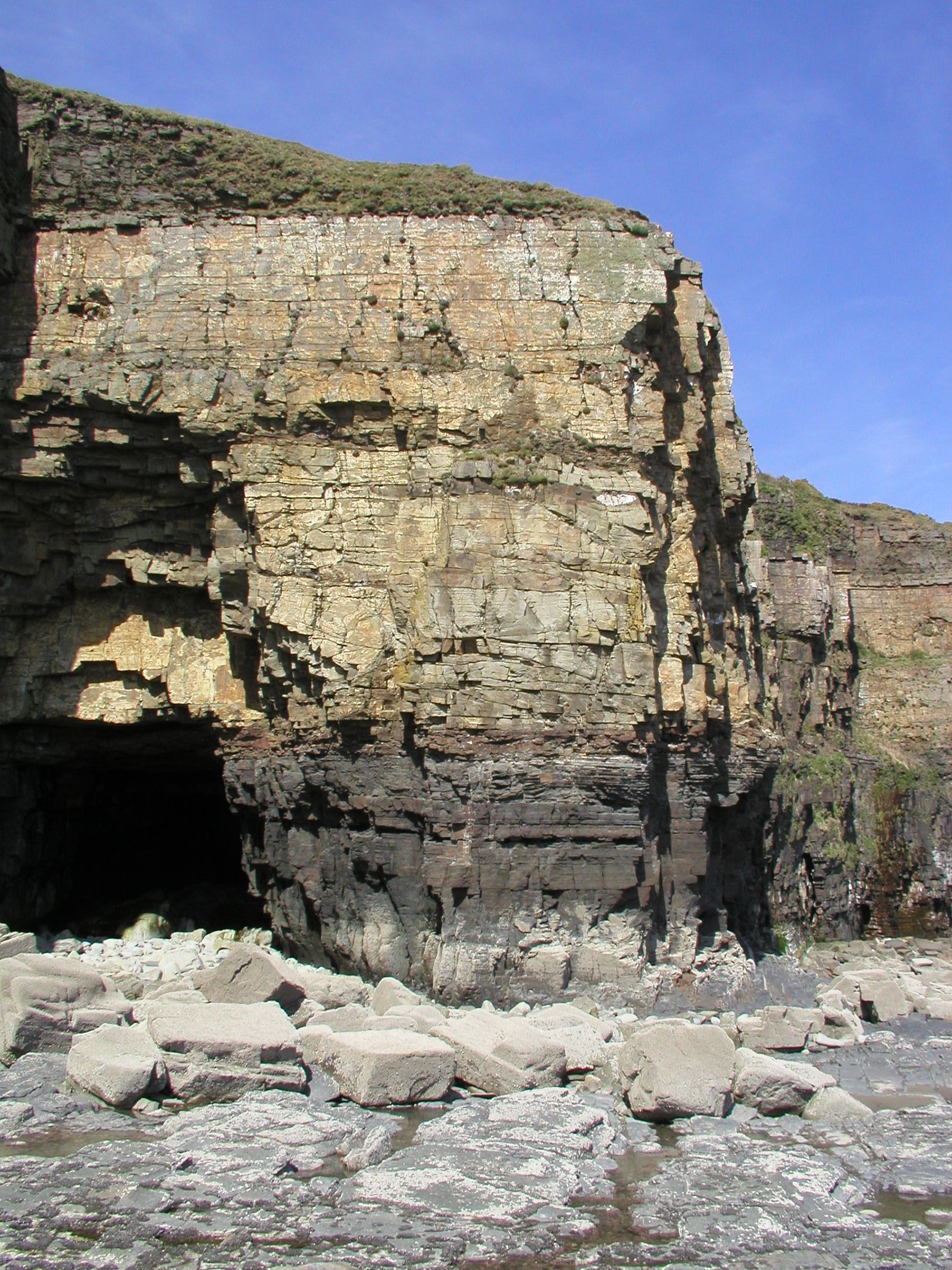
Approximately 155 to 169m . The base of the Telpyn Point Sandstone at around
160m is just below the obvious change from dark- to light-coloured rocks.
|
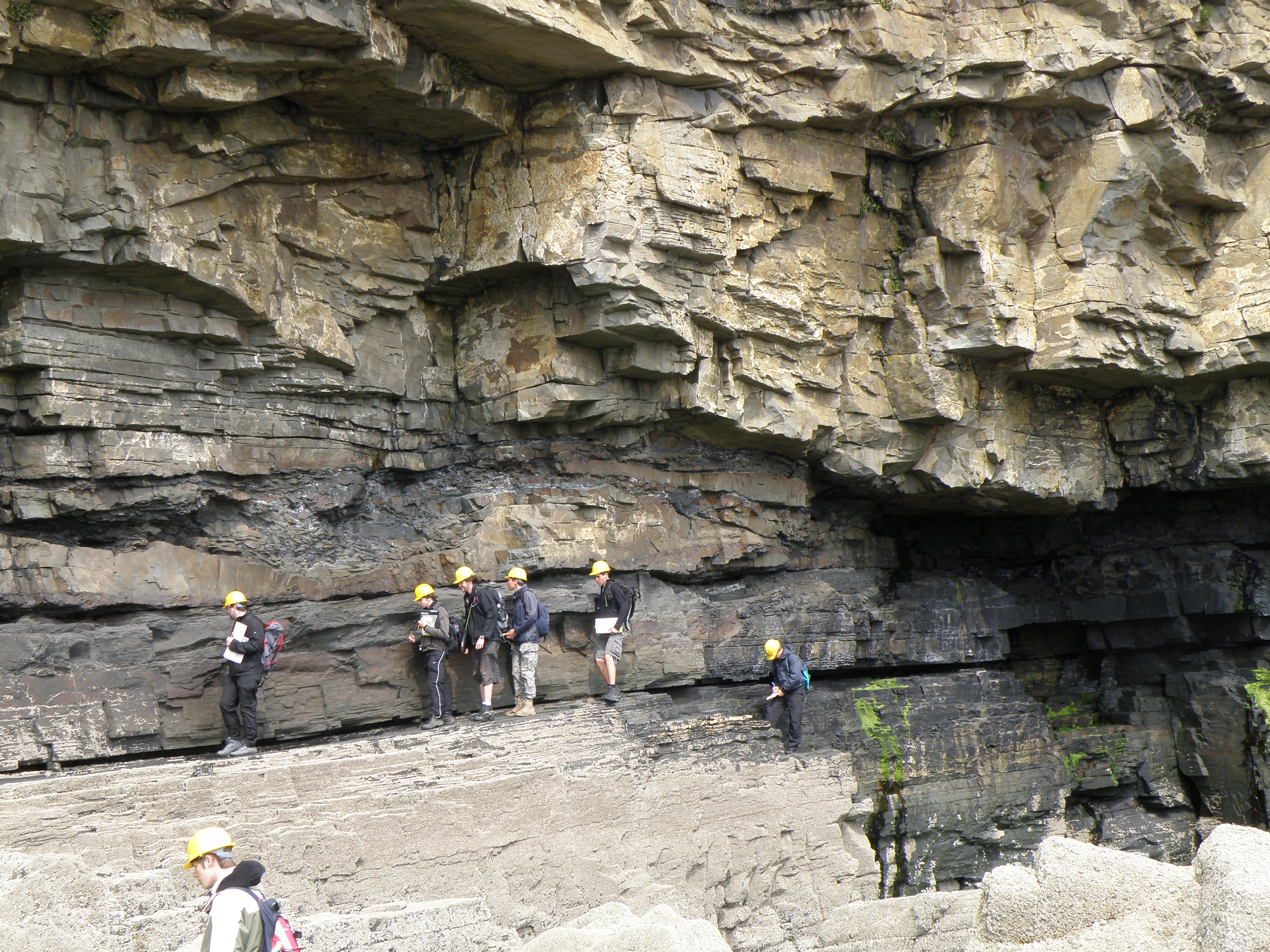
155 to 164m |
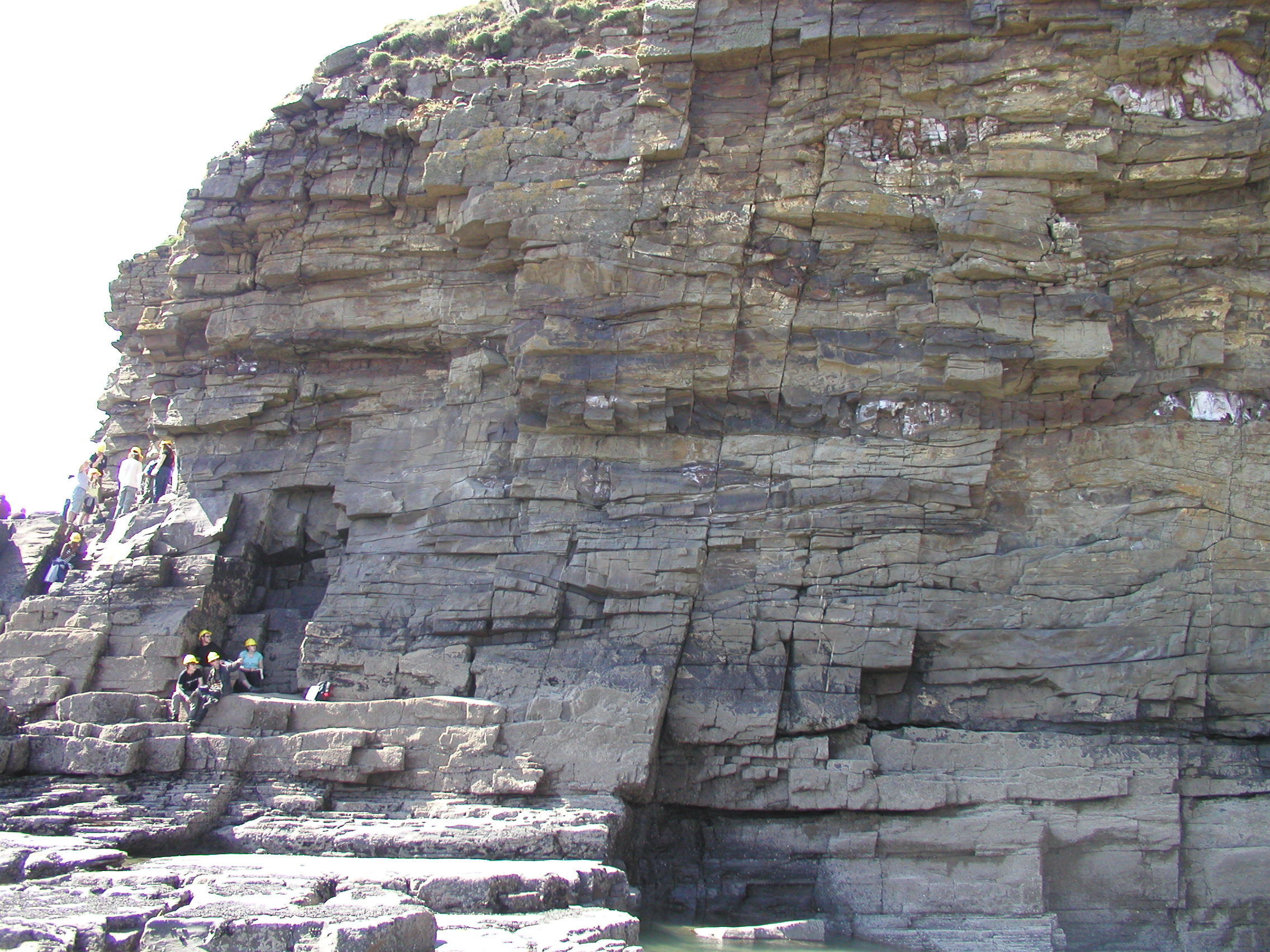
Lower part of the TPS from about 162m upwards |
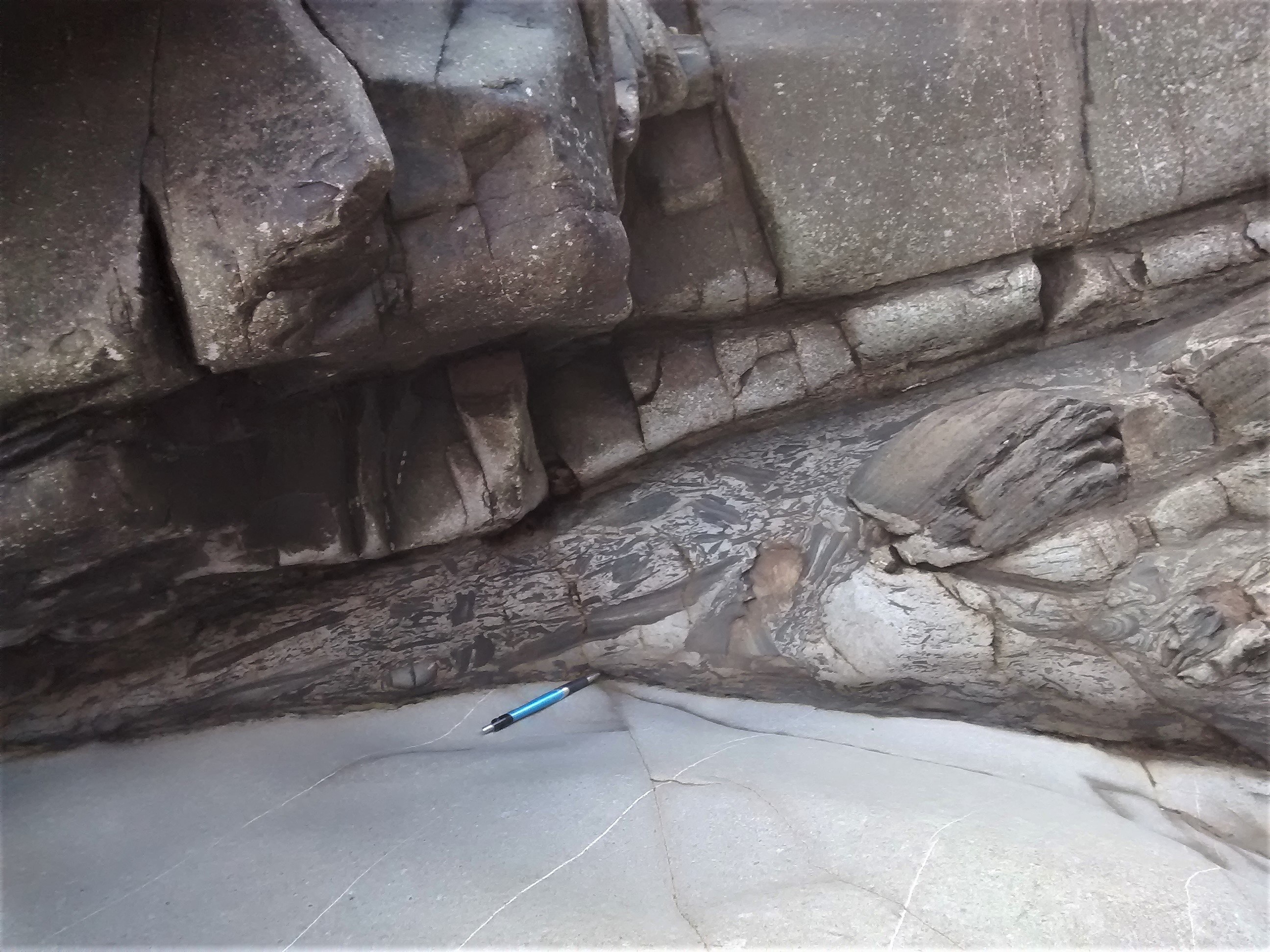
163m |
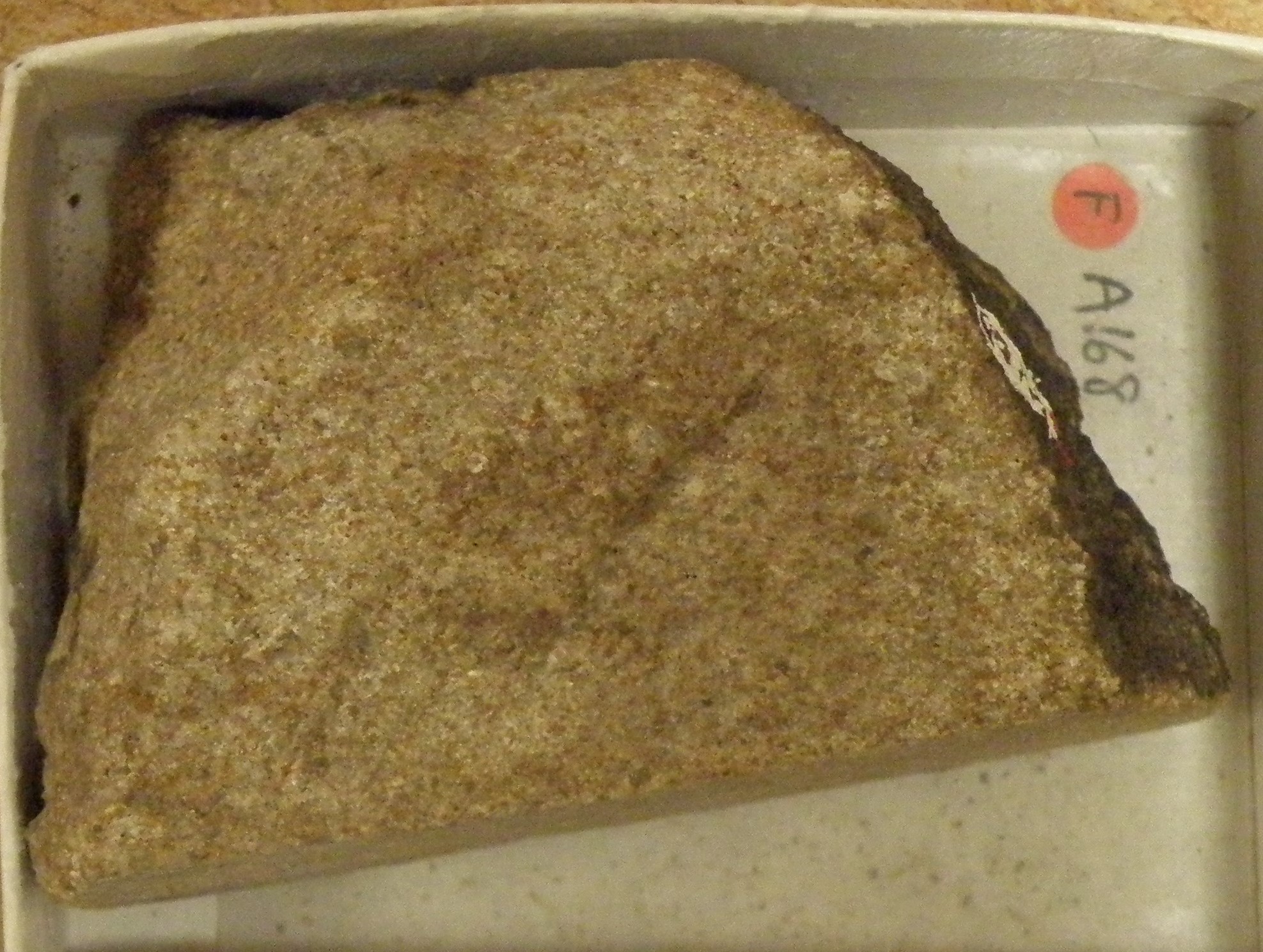
164m
|
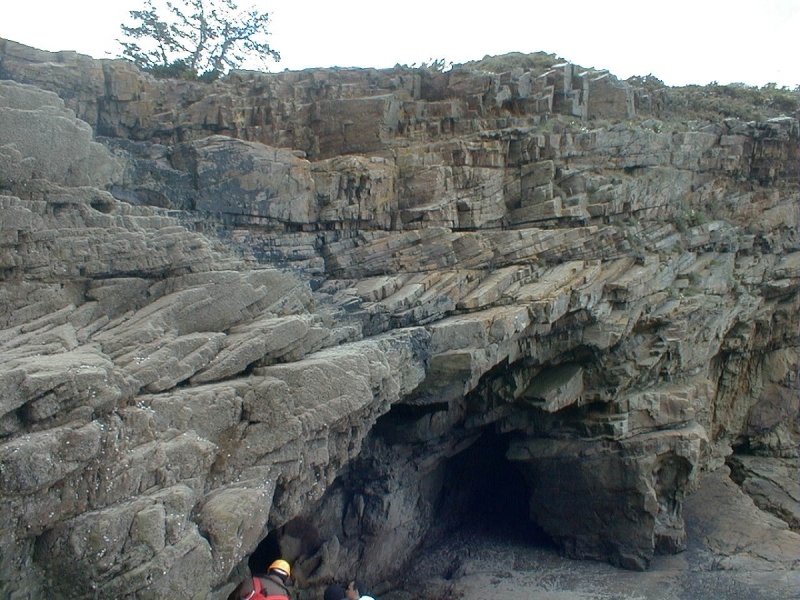
165m [photo from TPS at Tenby] |
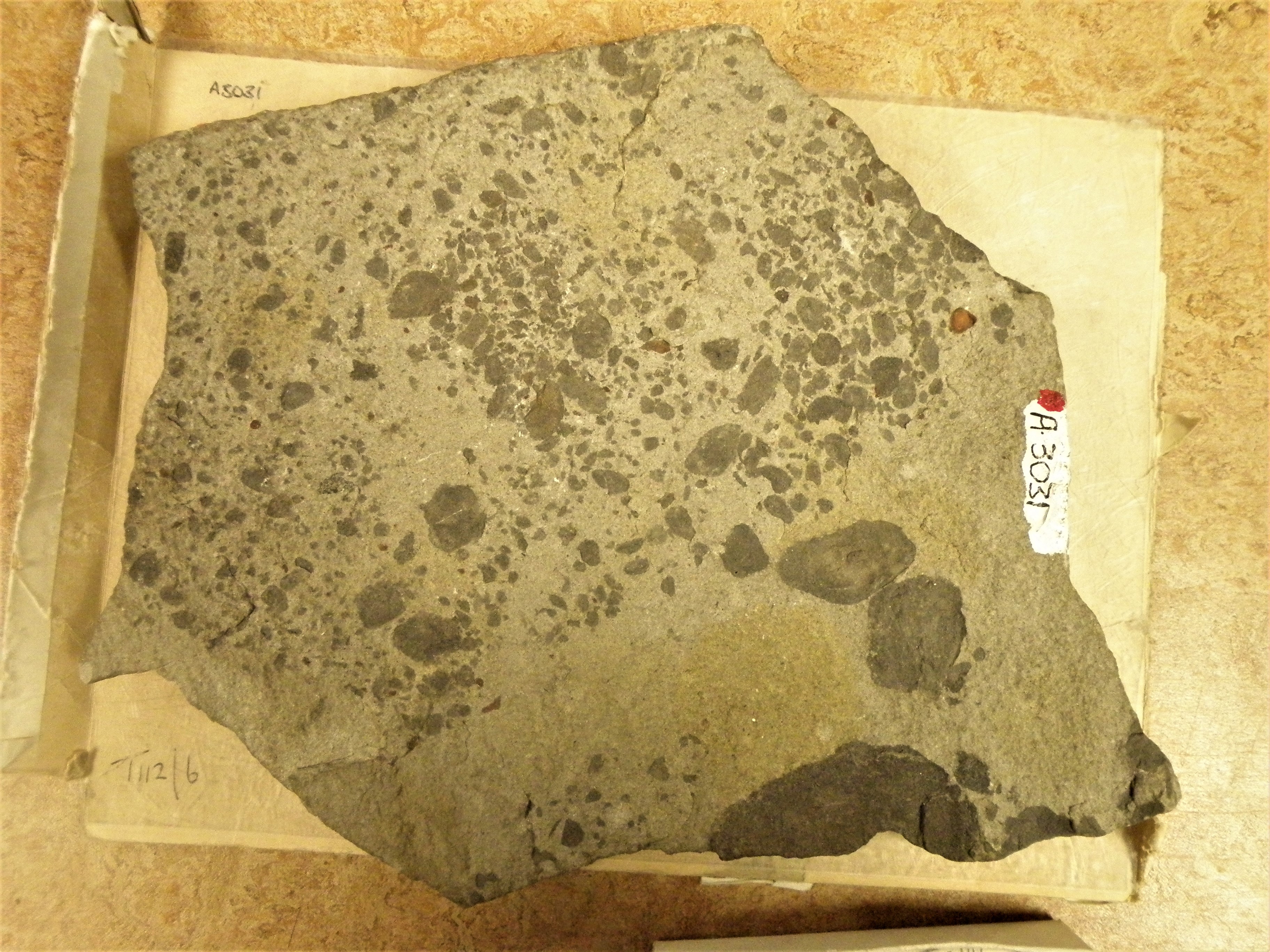
167m |
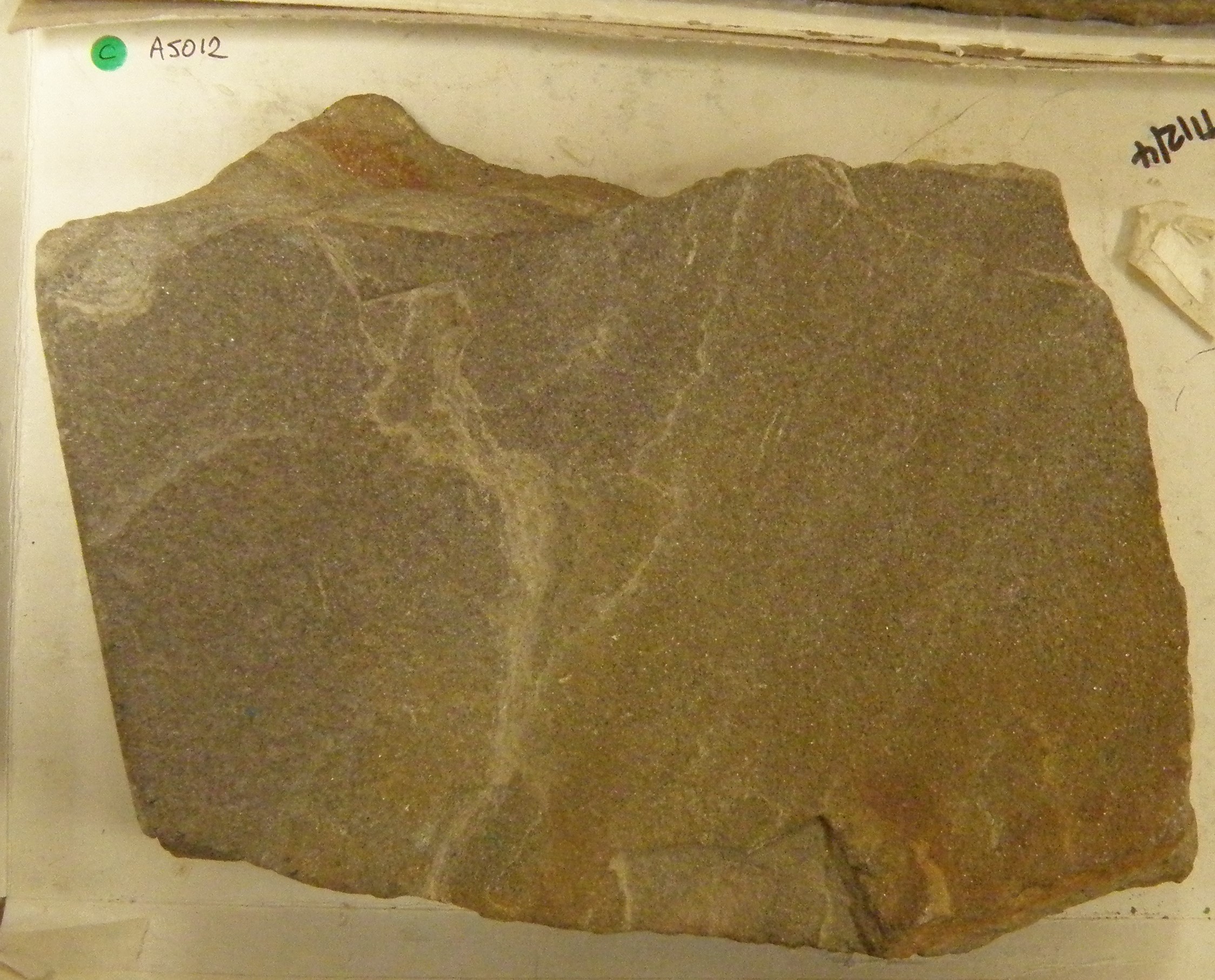
168m |
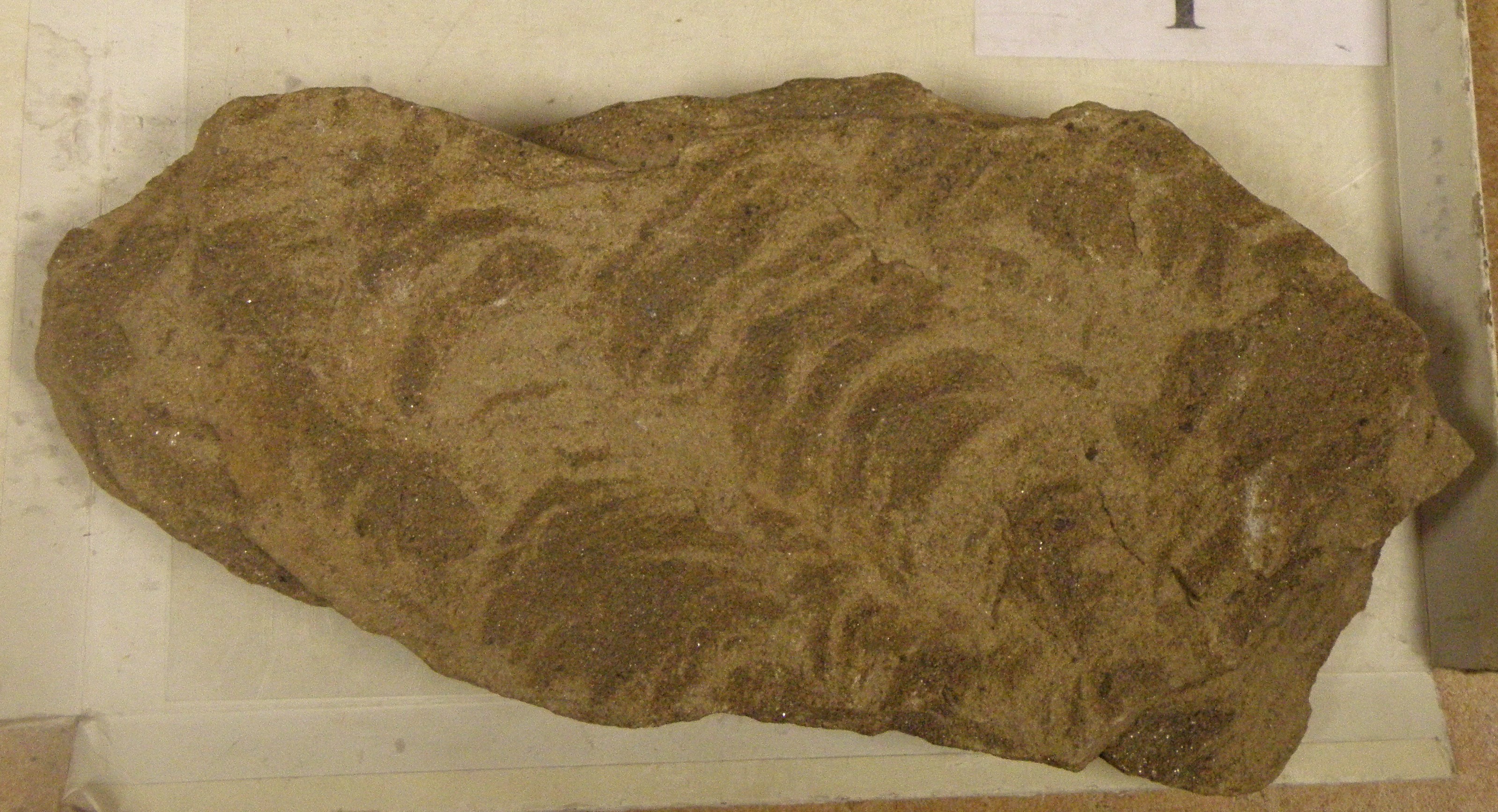
172m |
| 172.5 -
174 |
Coarse,
sharp-based massive sandstone. Flutes on base show palaeocurrents between
SSE and E |
|
|
|
| 174 - 179.5 |
Sharp base. Several
sharp-based beds of medium to fine sandstones, mostly showing current
ripple cross lamination or parallel lamination. Rib-and-furrow gives palaeocurrents
towards the SE
|
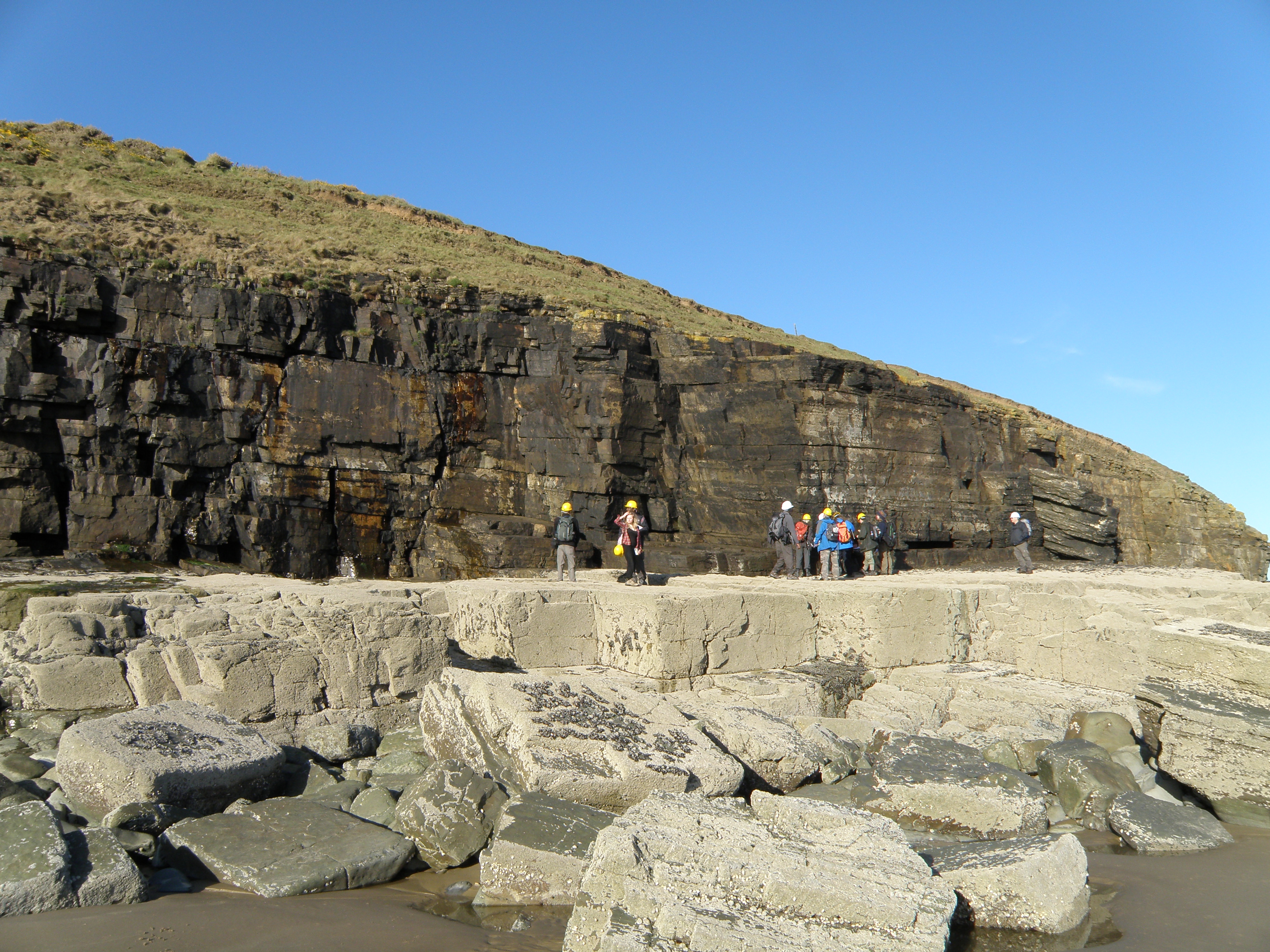
Section from ~175m upwards |
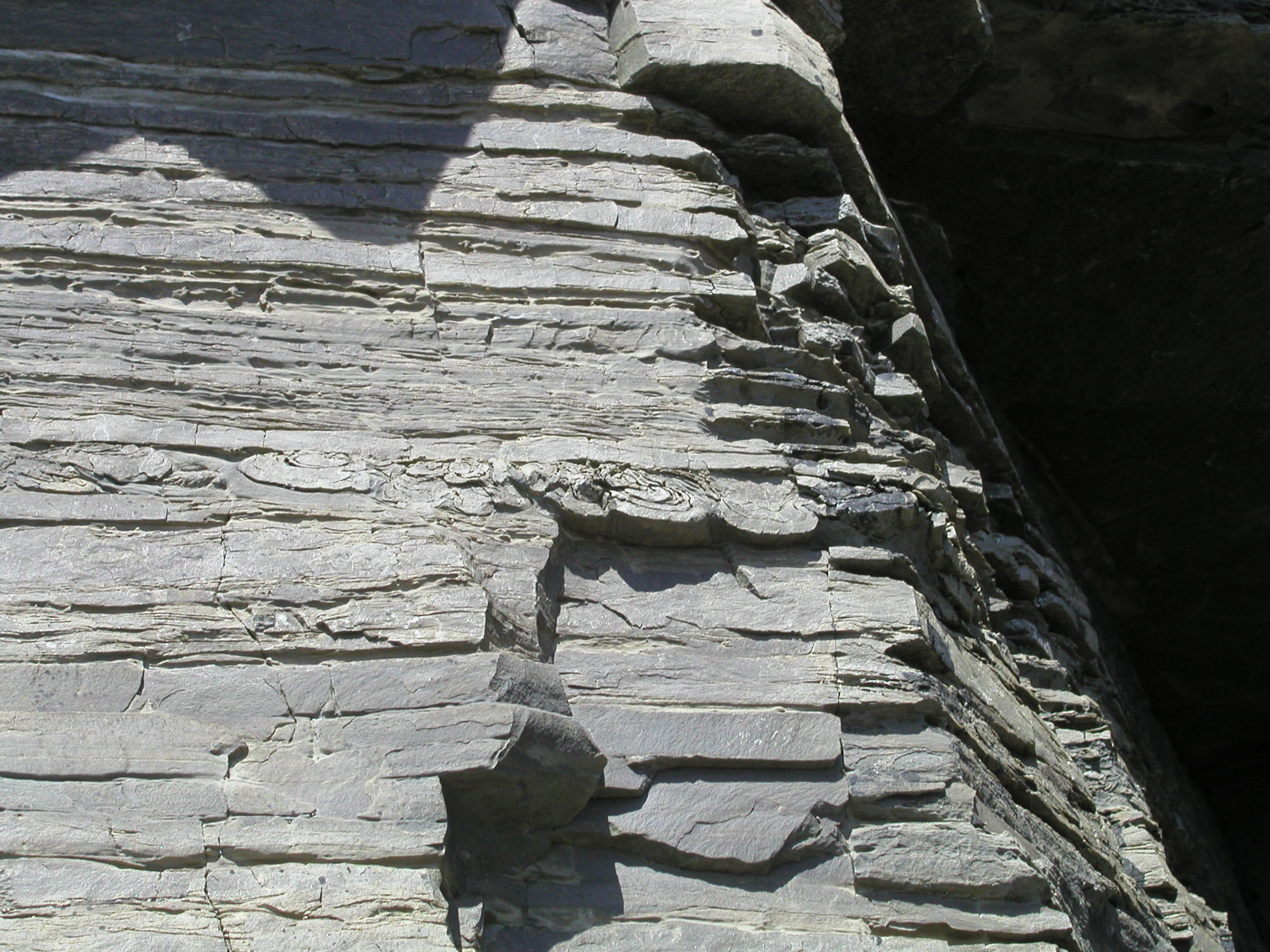
175 to 176m |
|
| 179.5
- 188 |
Fine sandstones pass
gradually upwards into siltstones with thin rippled sandstone interbeds.
Current ripple directions range from SW to SE
The top surface of
the siltstone shows a number of interesting features.
|
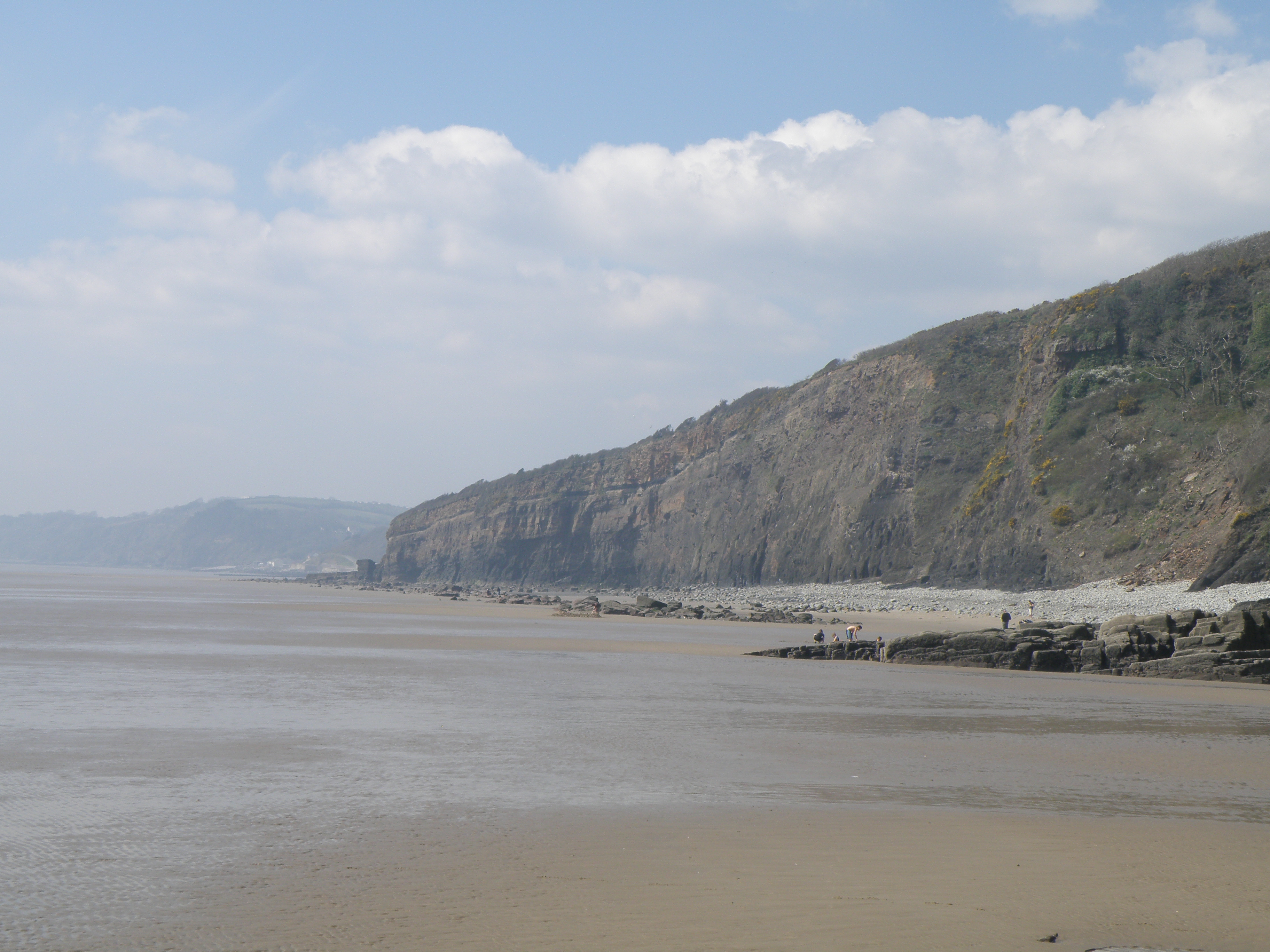
Top of the nearest outcrop is at 188m |
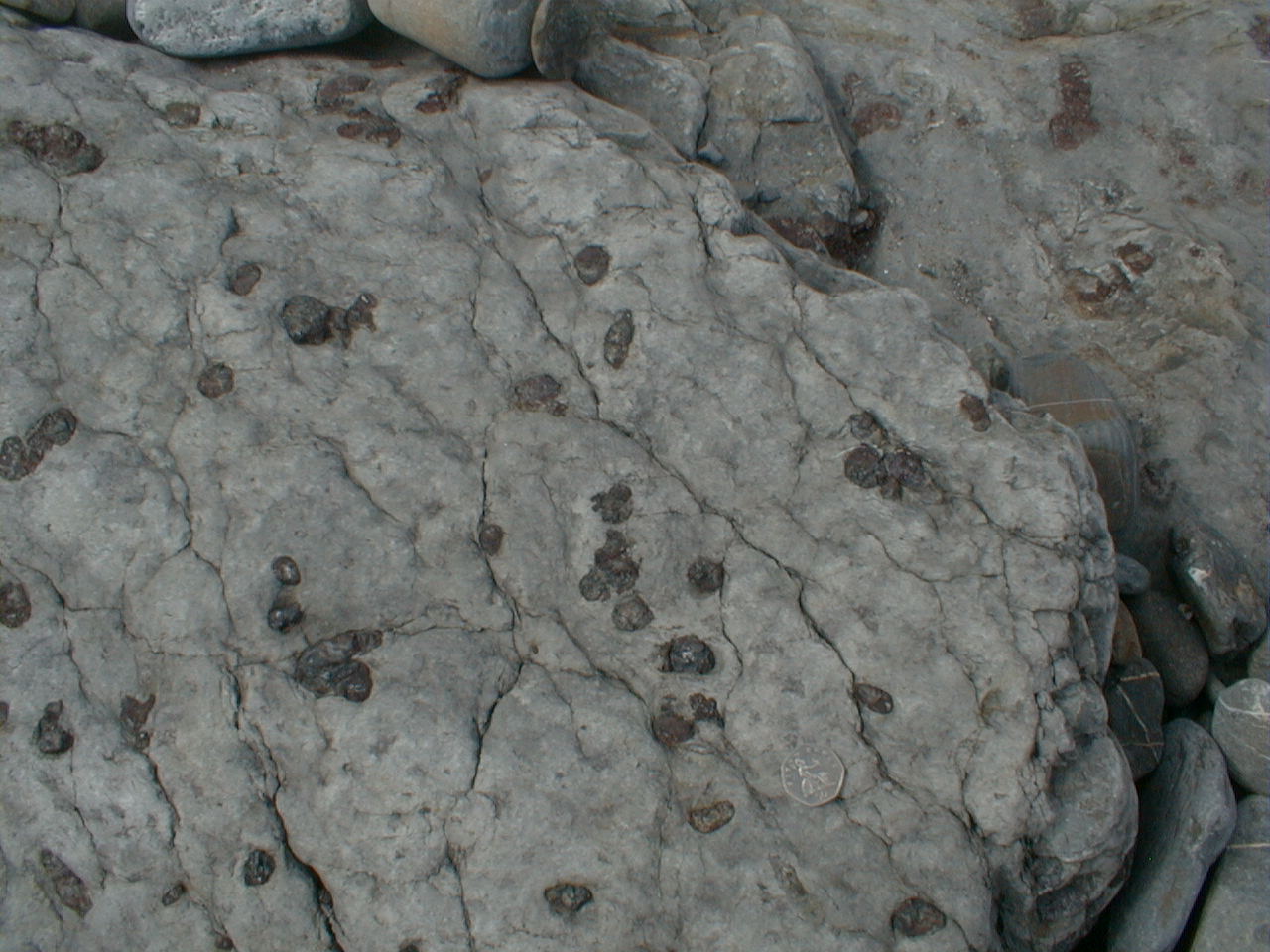
188m |
|
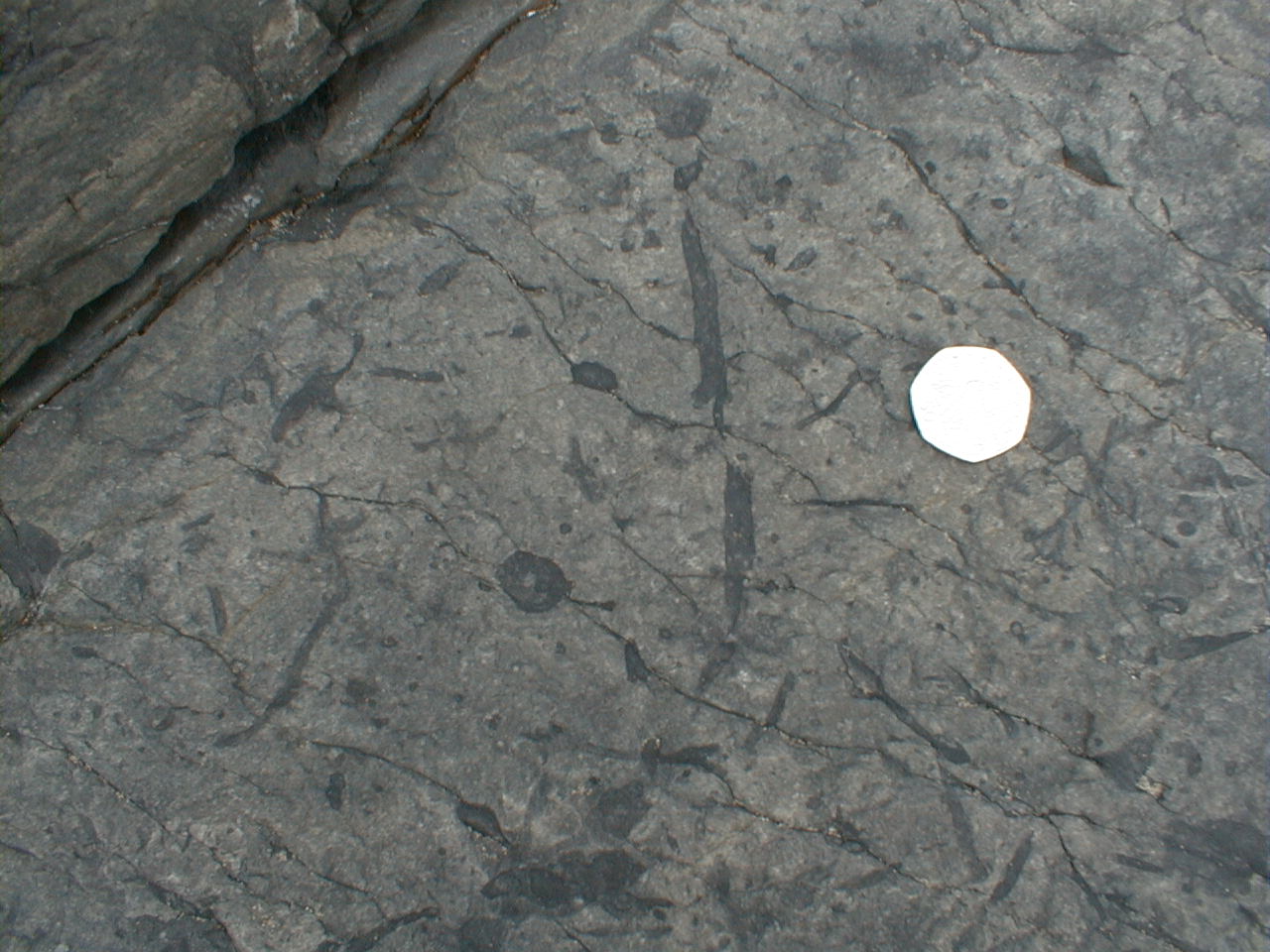
188m |
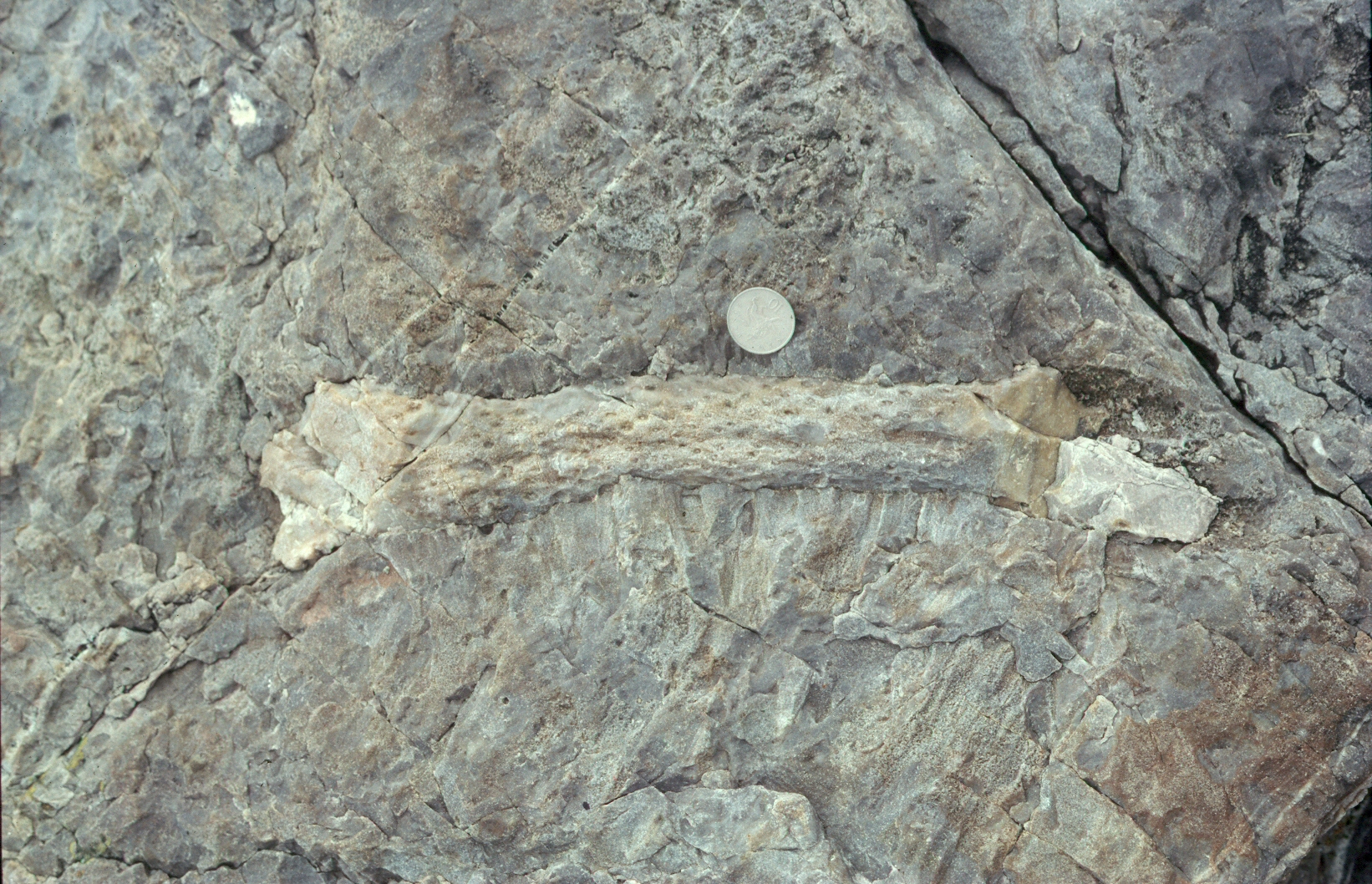
188m |
|
| 188-188.3 |
A thin,
poorly exposed coal |
|
|
|
| 188.3 -
192 |
Dark grey shales
containing Gastrioceras subcrenatum near the base - this is the
subcrenatum Marine Band.
Higher up, the fossil
on the right is commonly seen.
Top of section not
seen. Above lies the Westphalian section at Locality 4.1
|
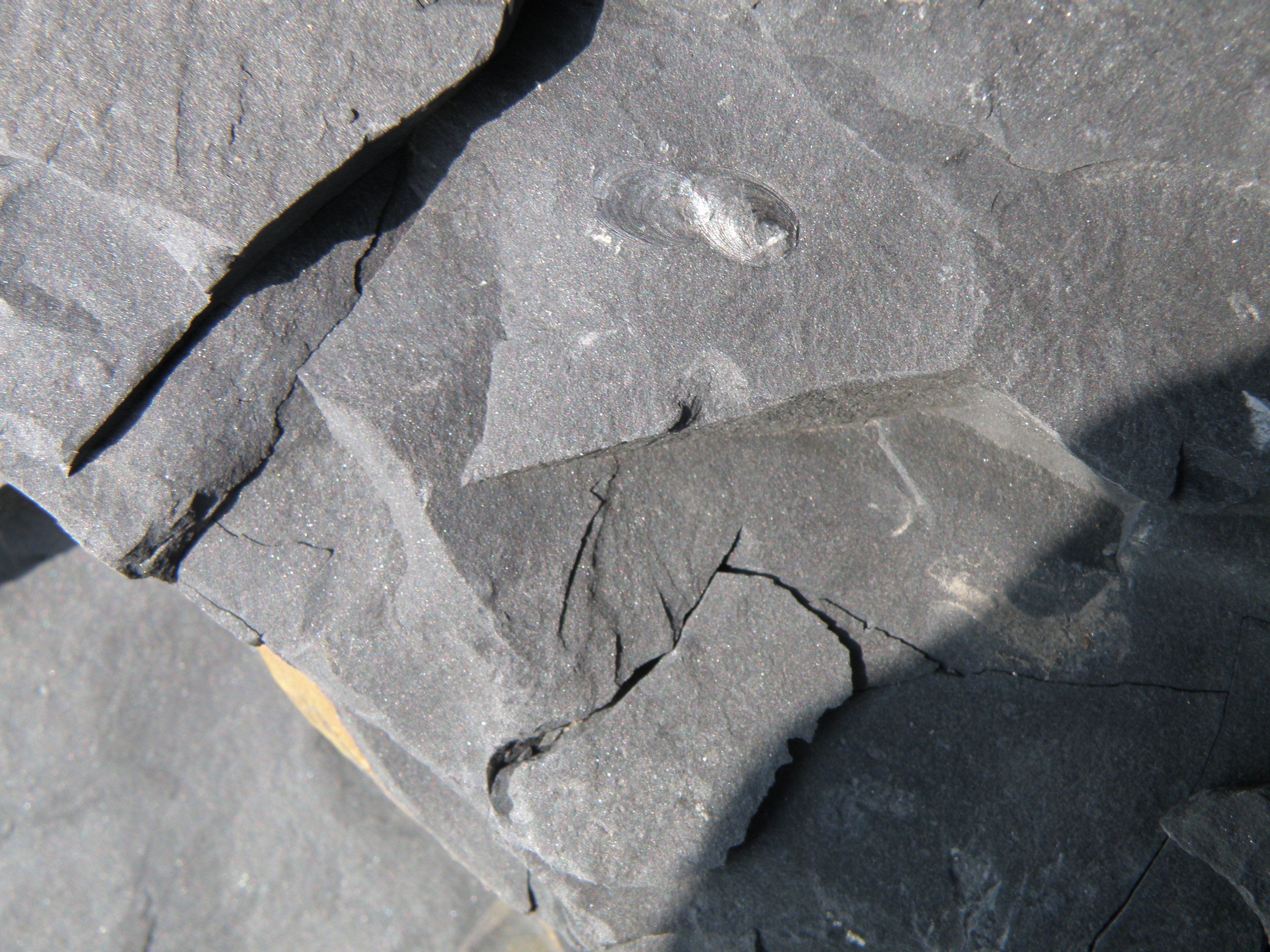
191m |
|
|
Interpreting the Sedimentary Log
You have now acquired a variety of
different types of data on the sedimentary sequence shown in the log. This includes
lithology, sedimentary structures and field relationships seen in photographs
and samples, and a palaeocurrent plot. Your task now is to interpret the data.
- For each unit or significant surface
on the log, write a brief interpretation of the processes and conditions of
formation. Include in your interpretation information such as environmental
energy, flow regimes, salinity, oxygen levels, depth etc. There must be evidence
to support all of your interpretations.
- Suggest a depositional environment
for each unit.
- Write a short (250 word maximum)
interpretative account of changes in processes, conditions and environments
from the base to the top of the logged sequence, in

Just for fun...

Next locality
Make sure you've completed all the
work for this traverse, the last major locality of the field trip. Now we can
get back on the virtual coach and head home to Derby, with some geological
observations and stops along the route.

This page is maintained
by Roger Suthren. Last updated
30 April, 2020 12:41 PM
. All images © Roger Suthren unless otherwise stated. Images may be re-used
for non-commercial purposes.


![]()
![]()
![]()
![]()